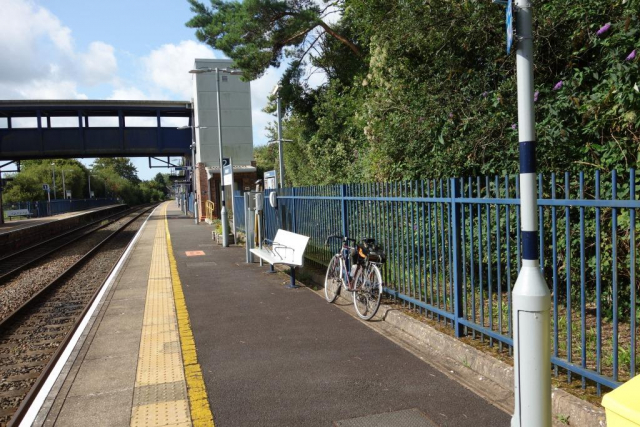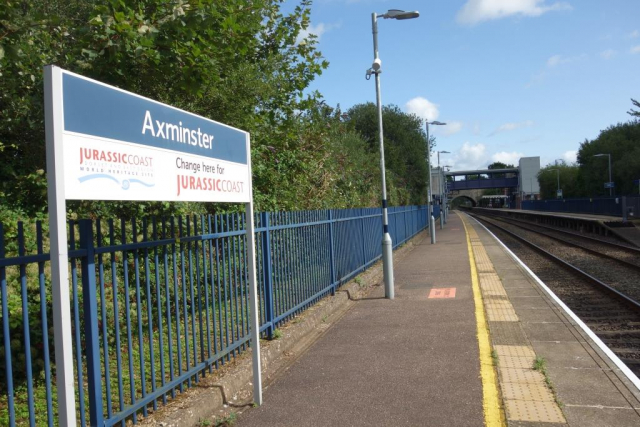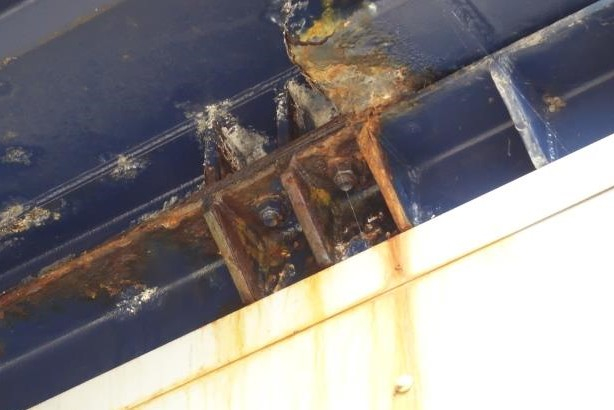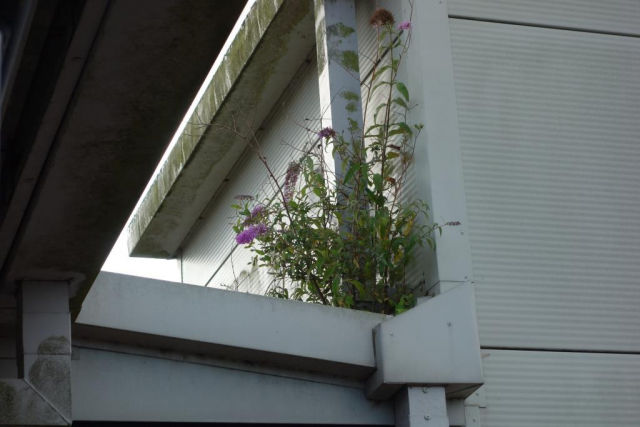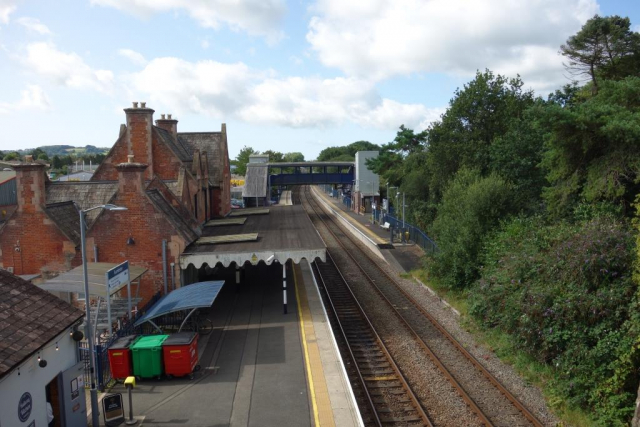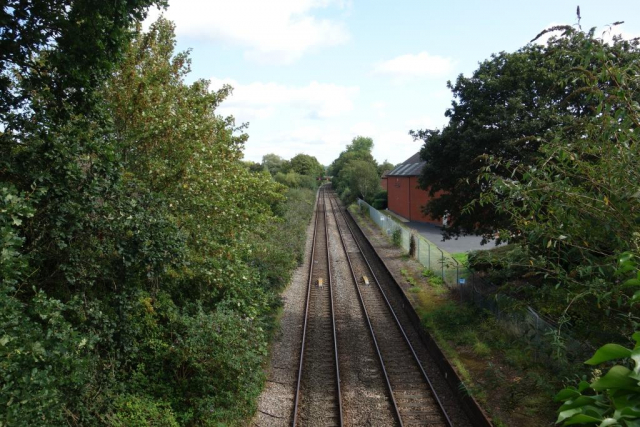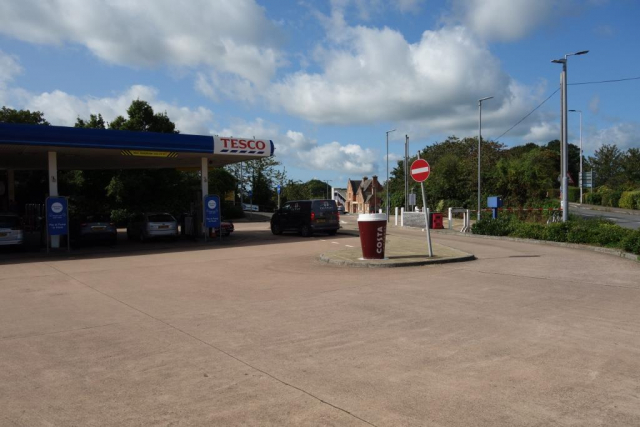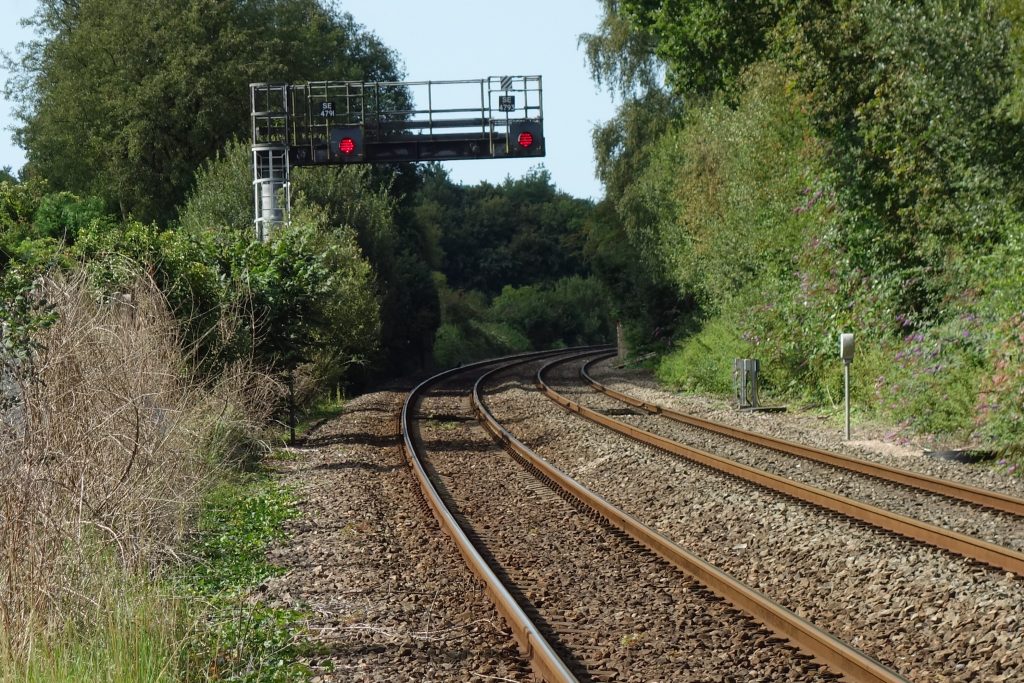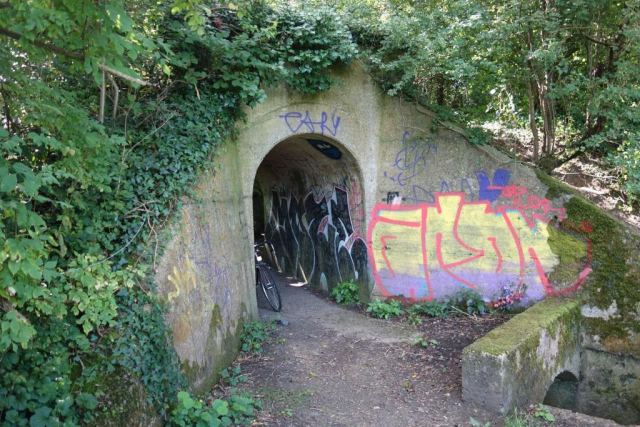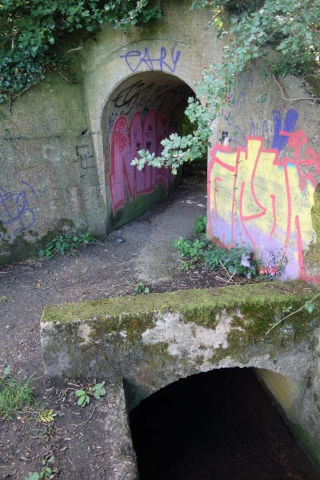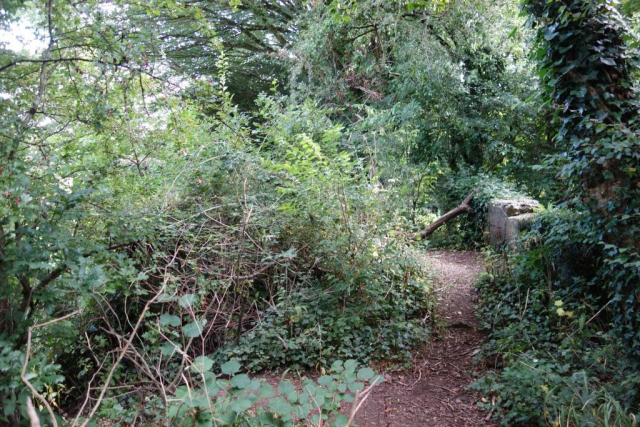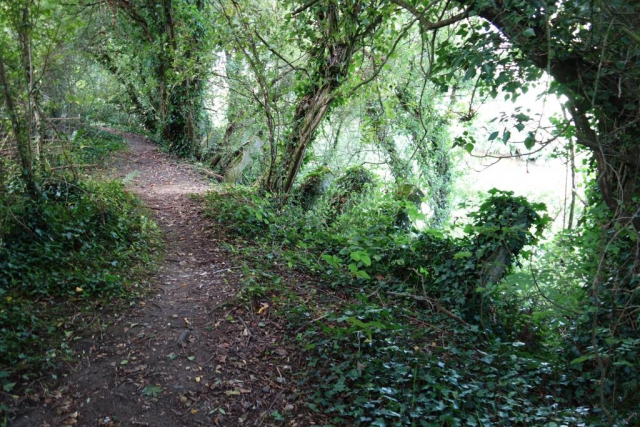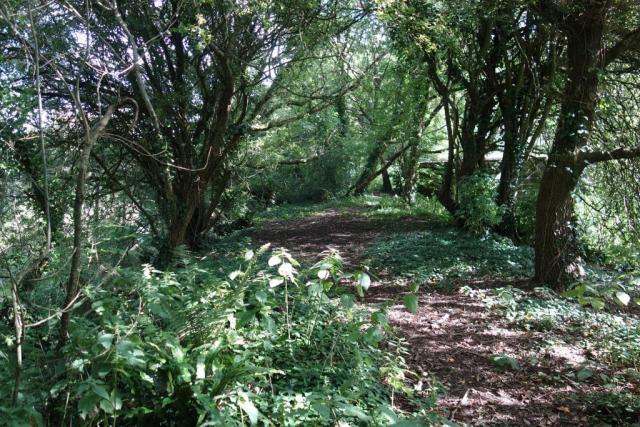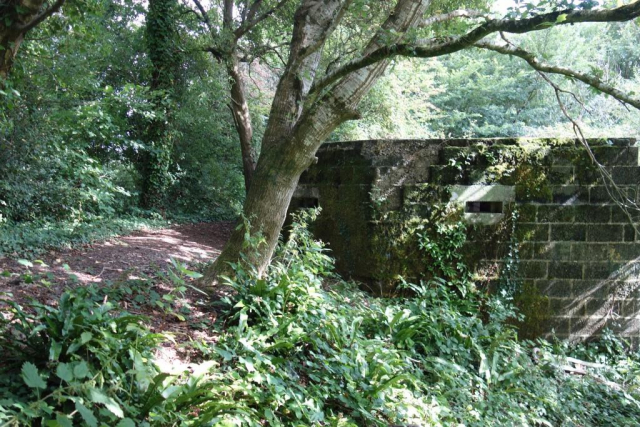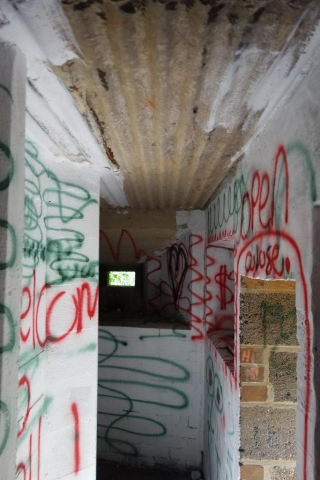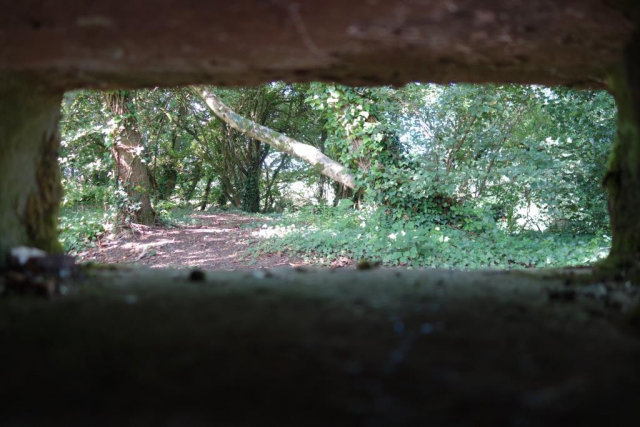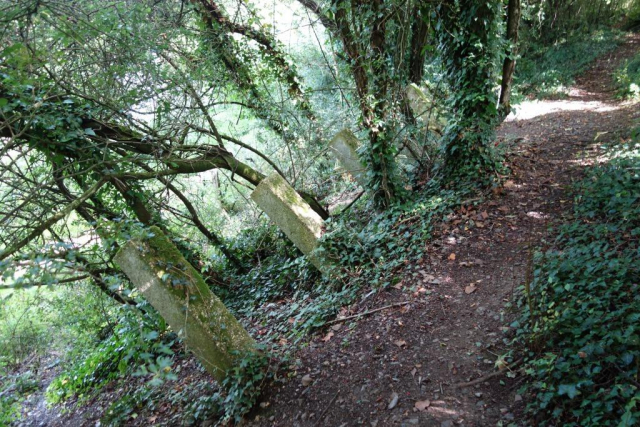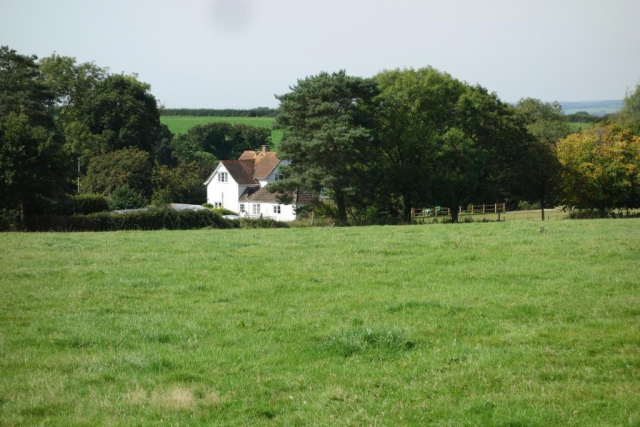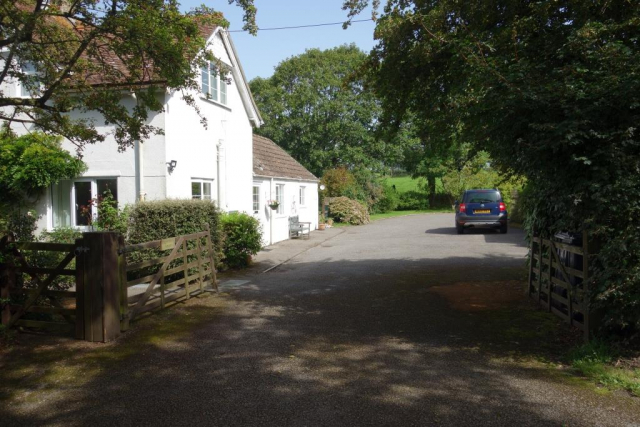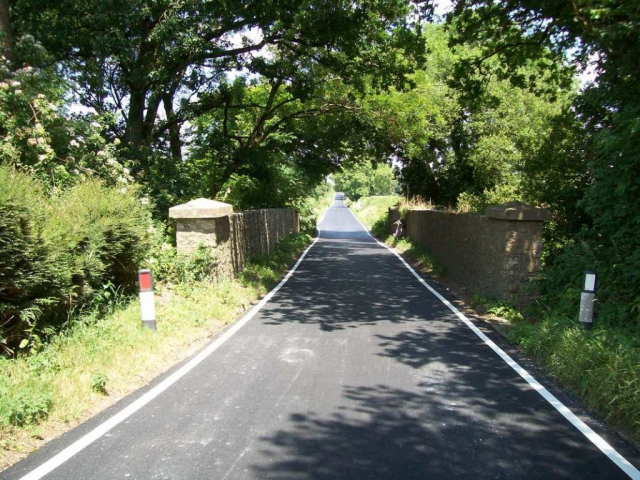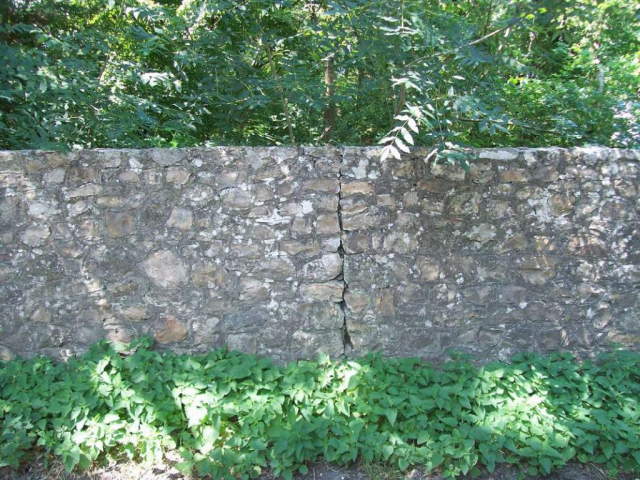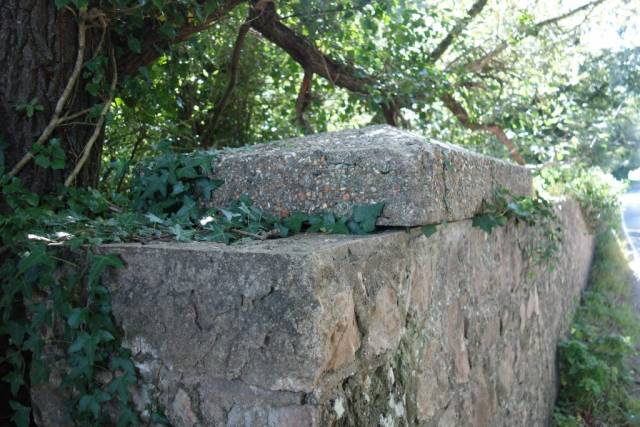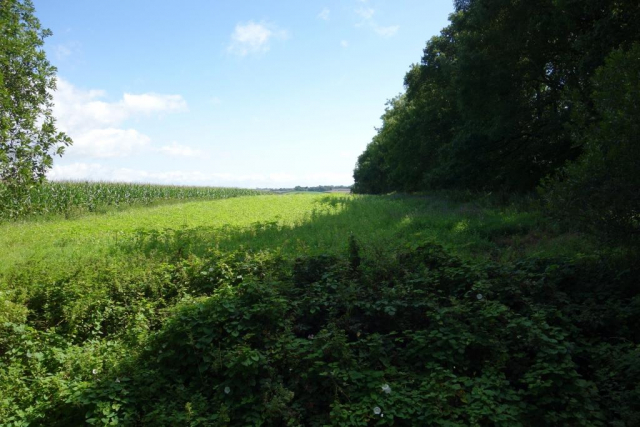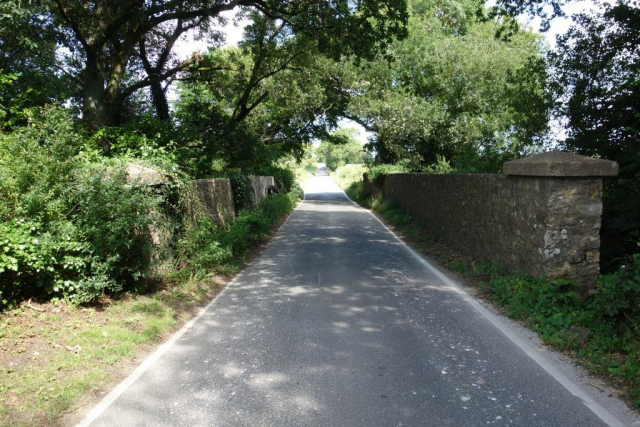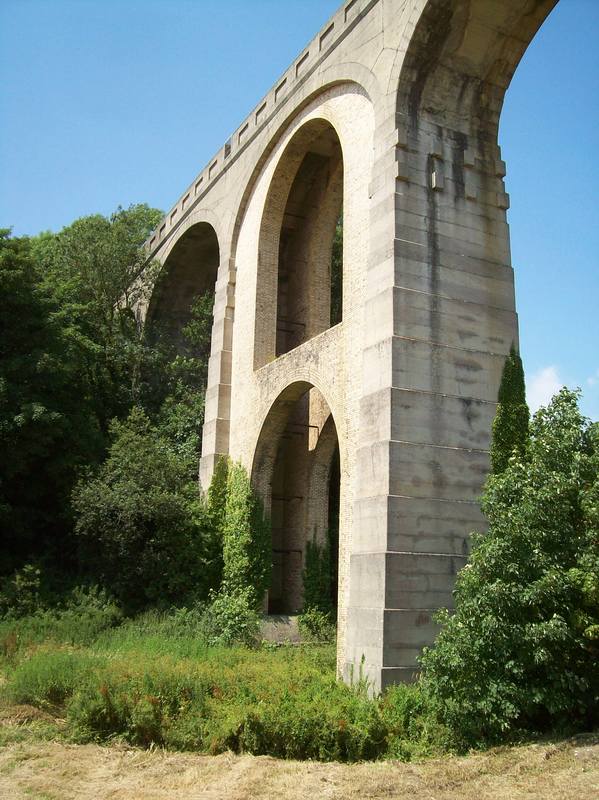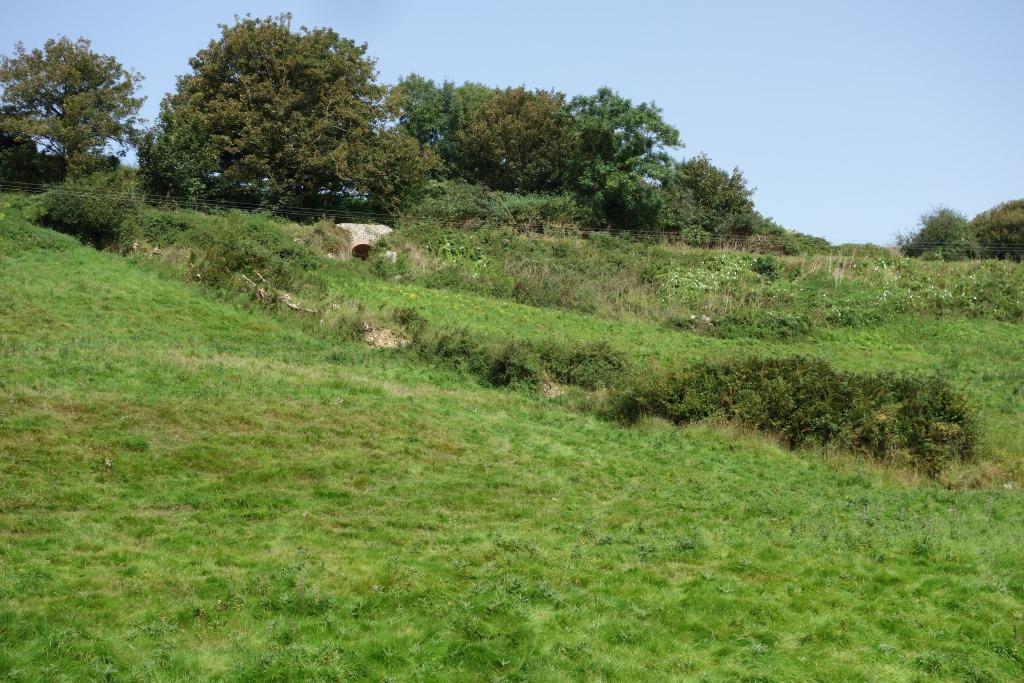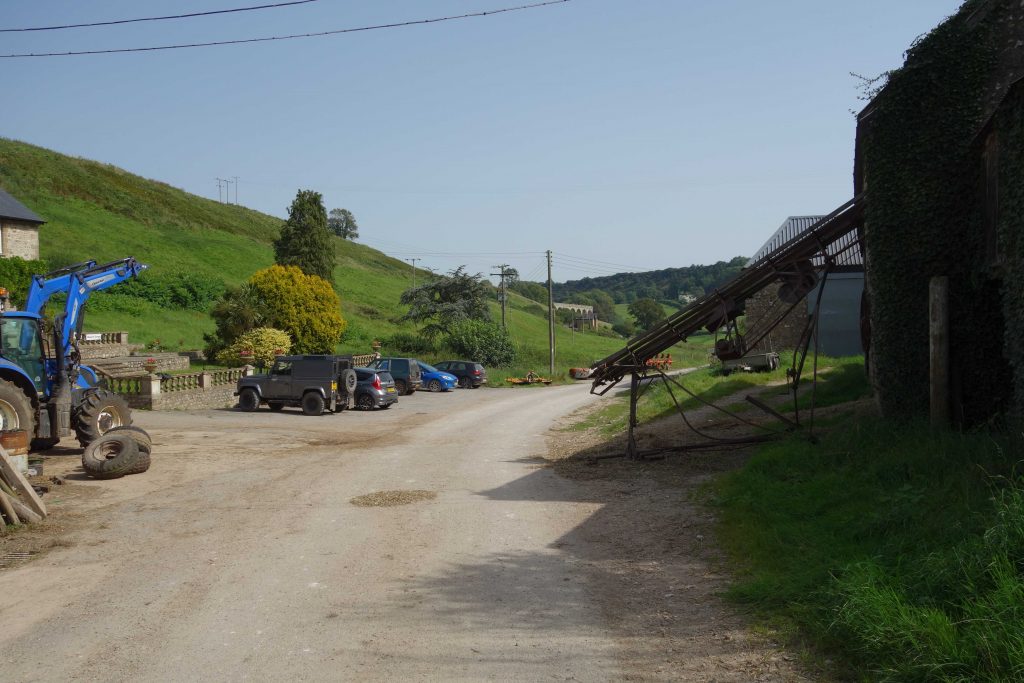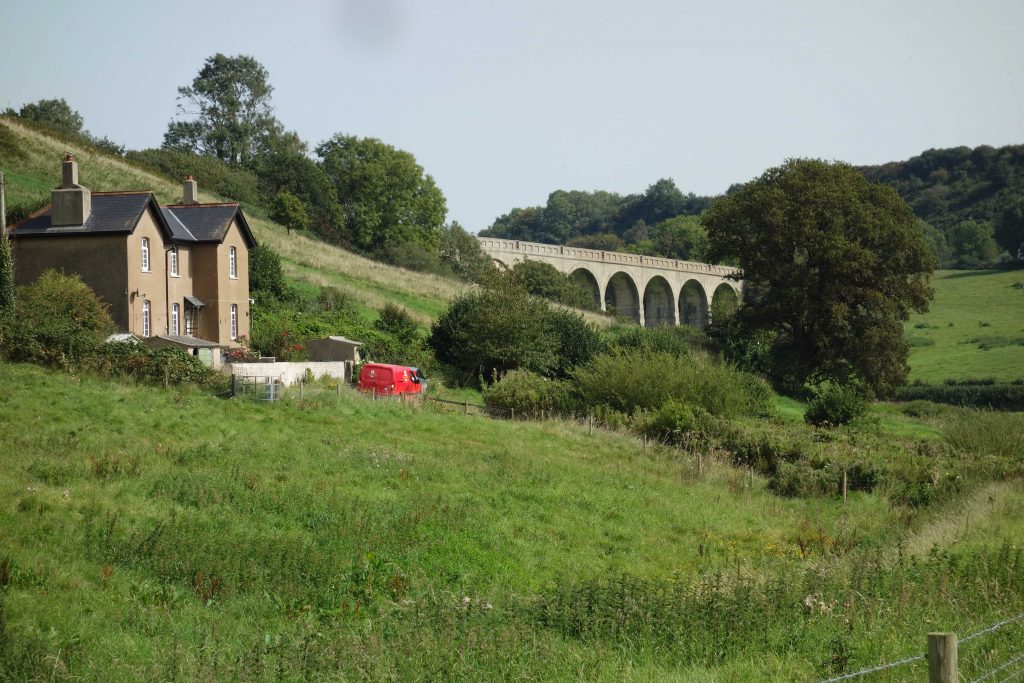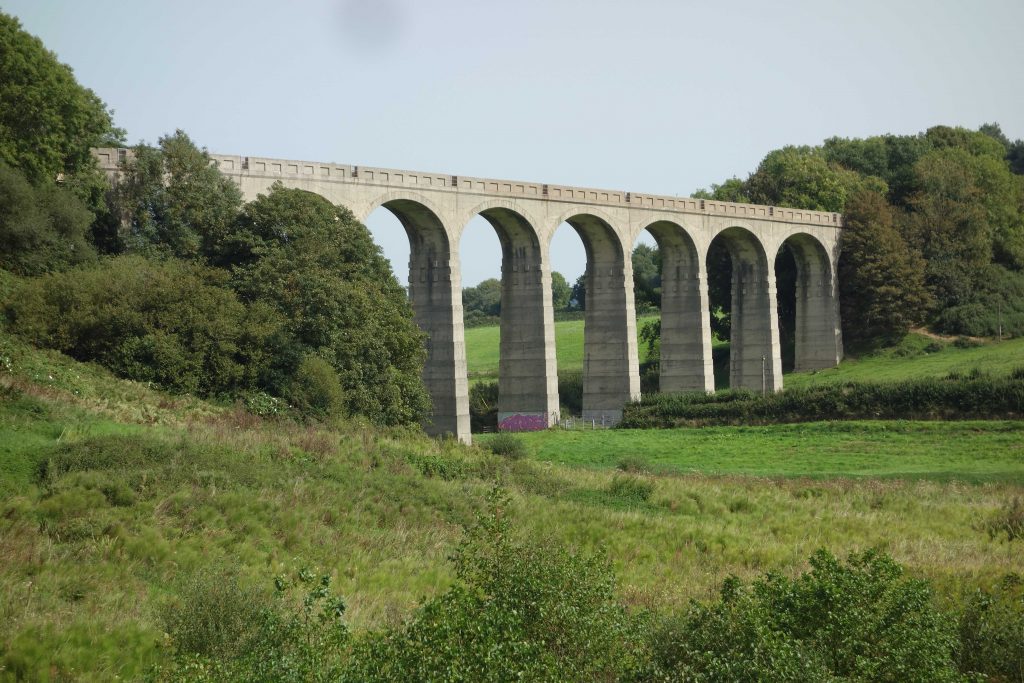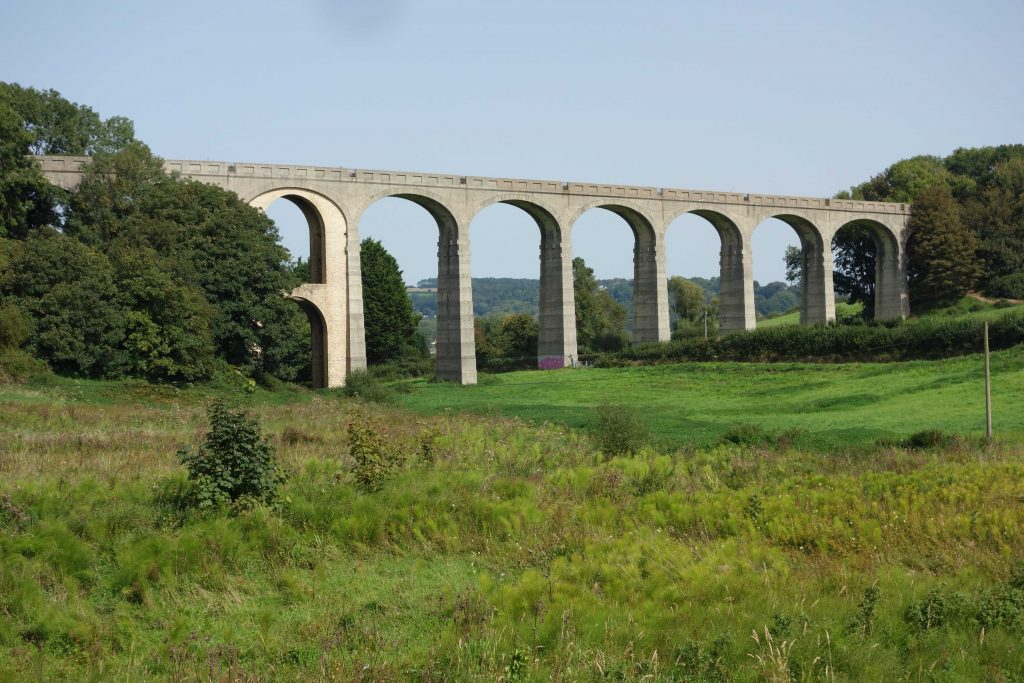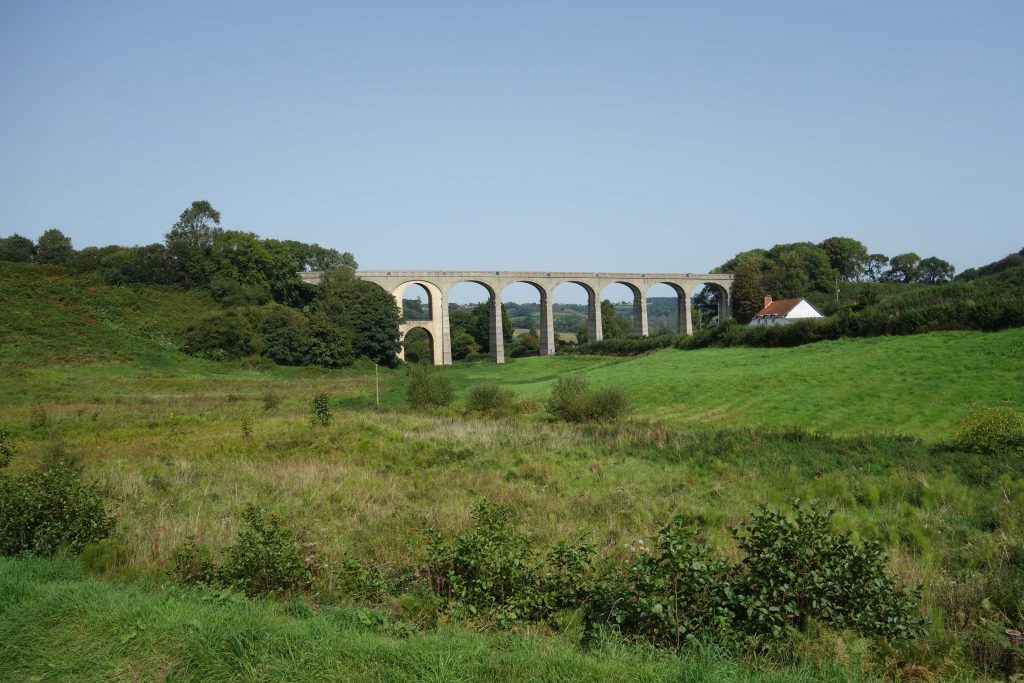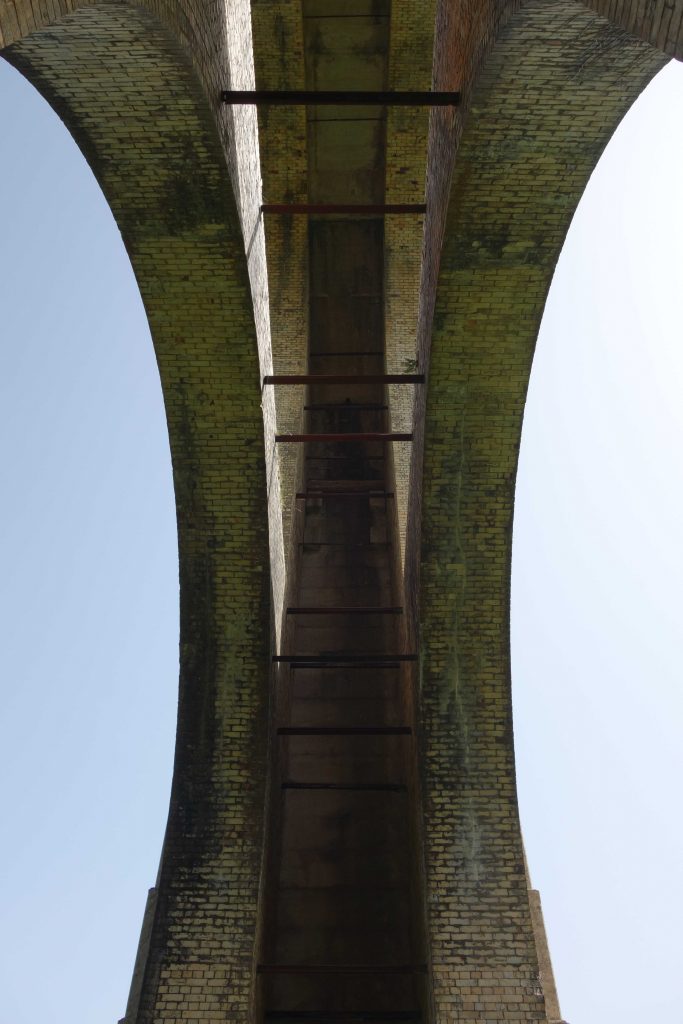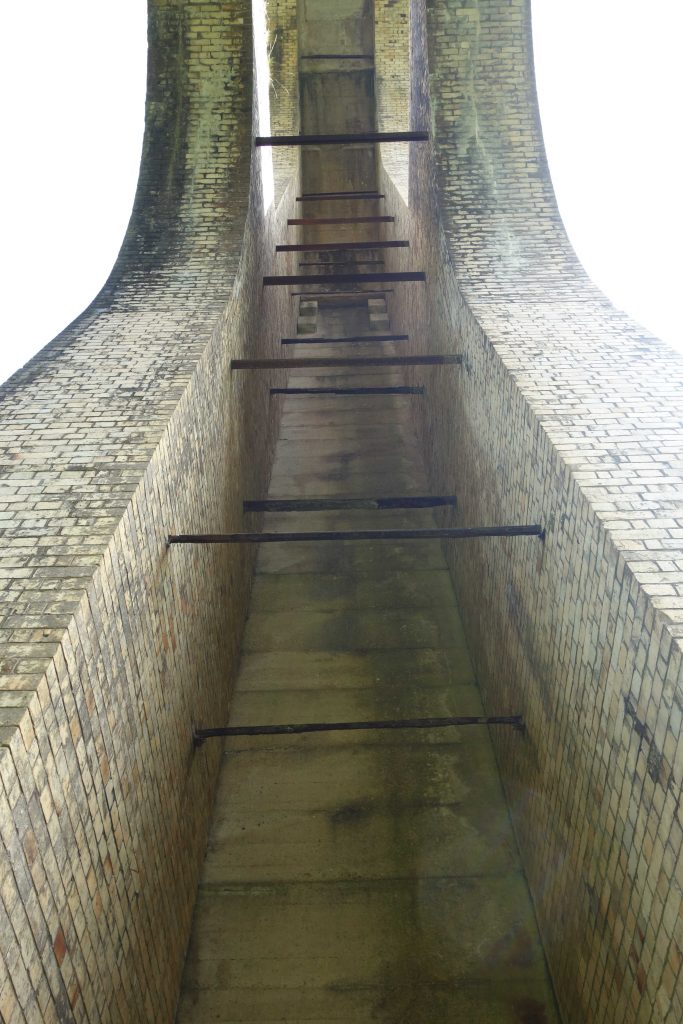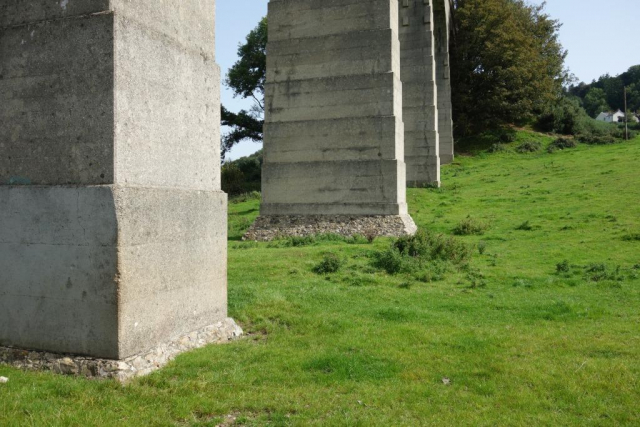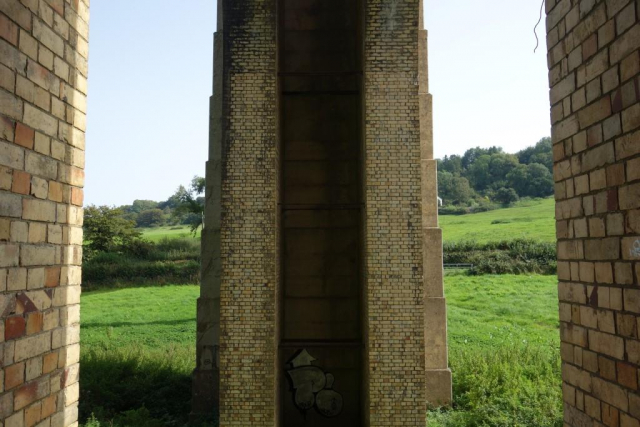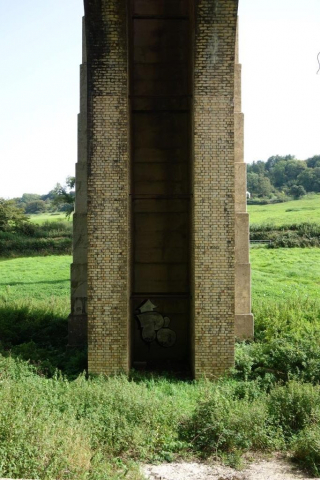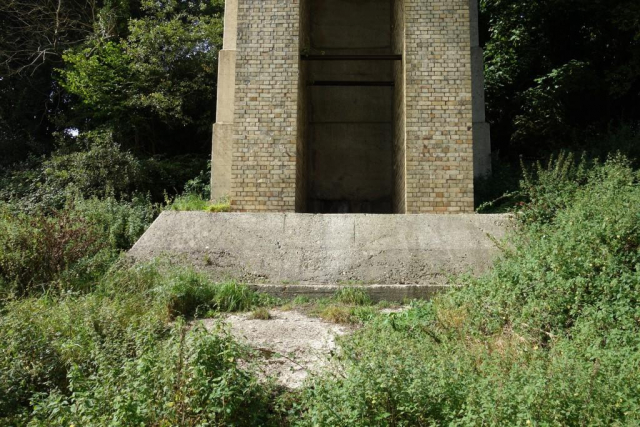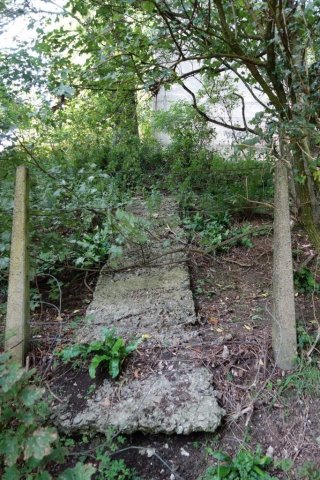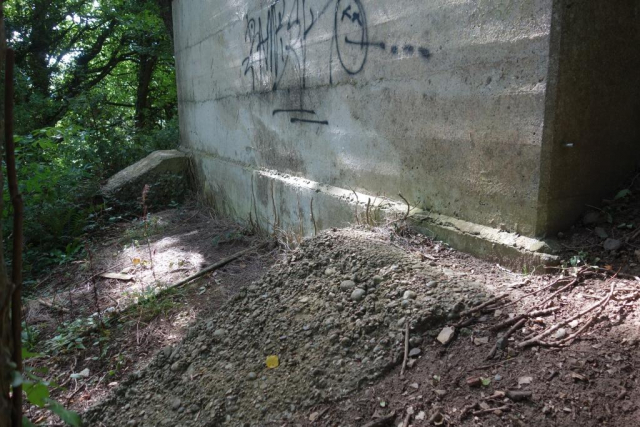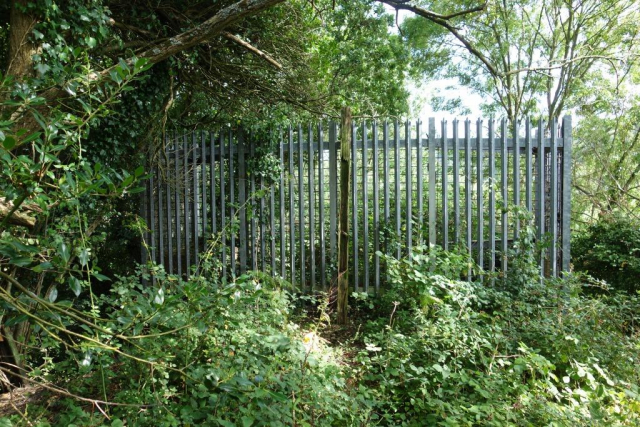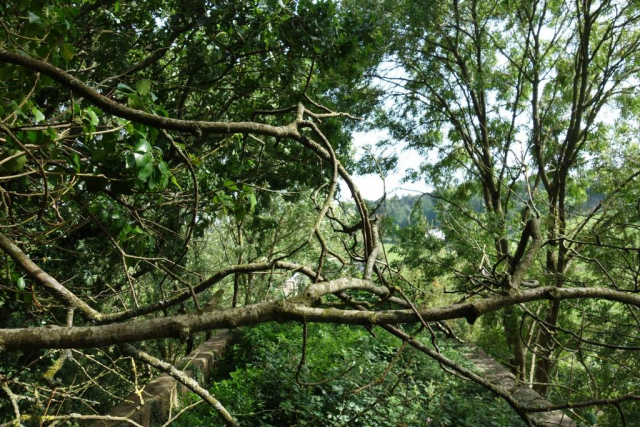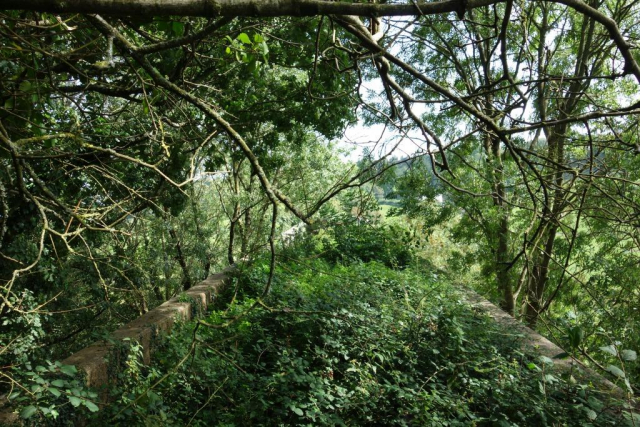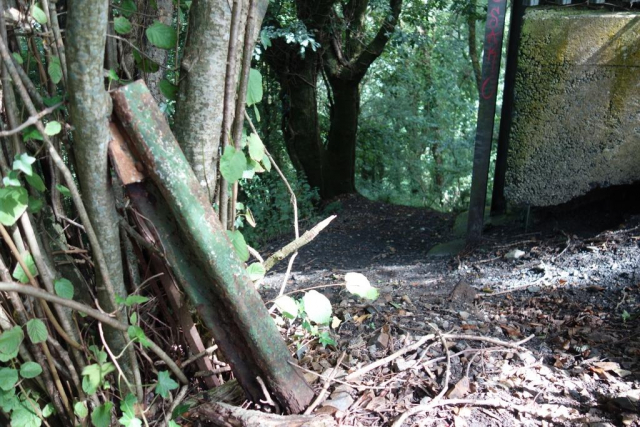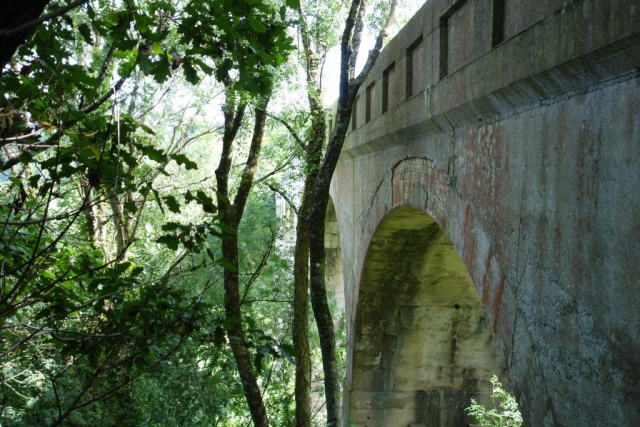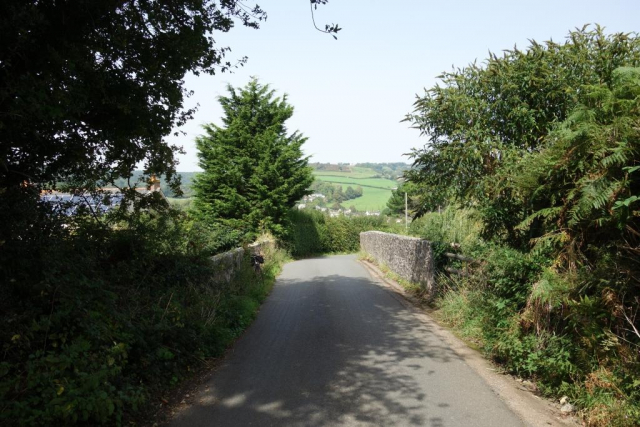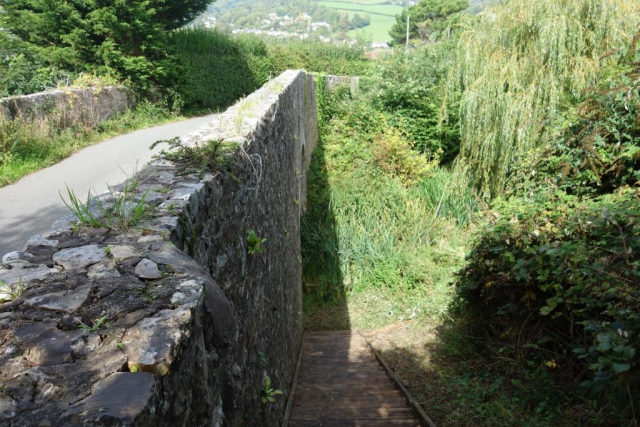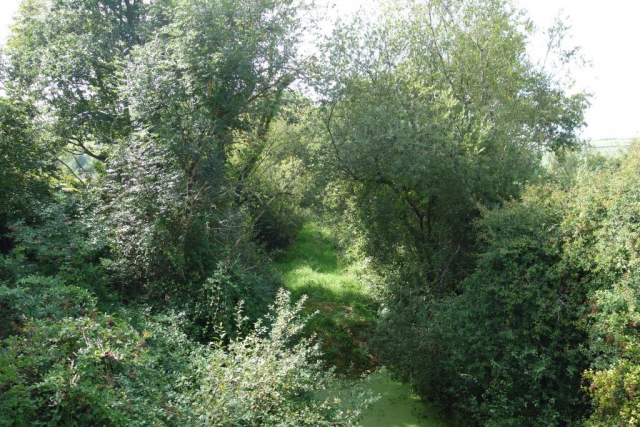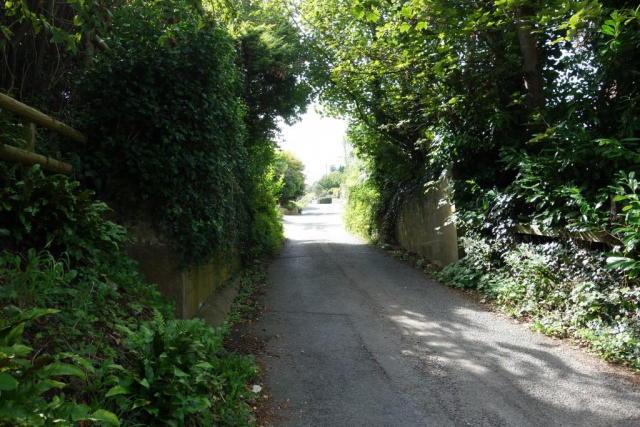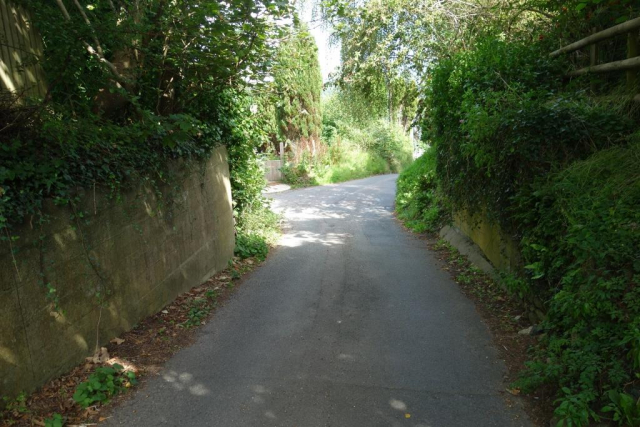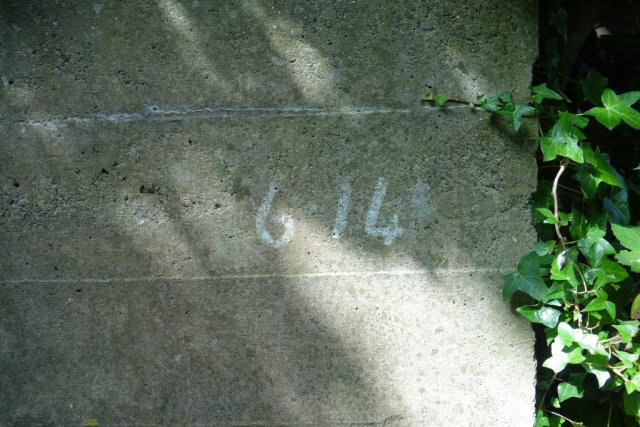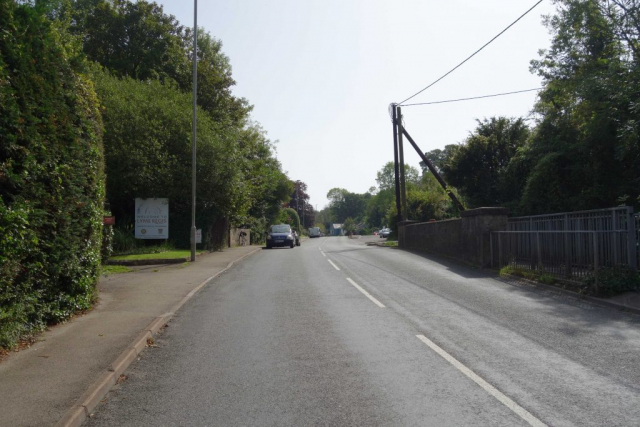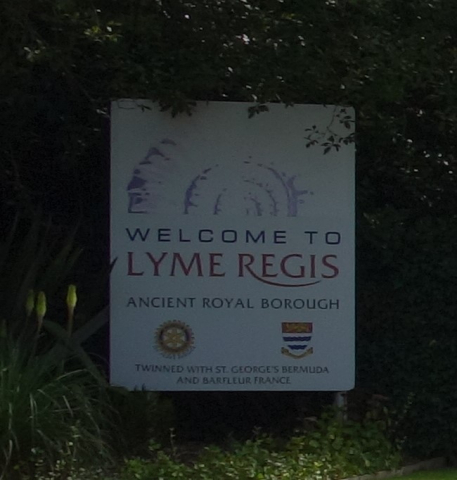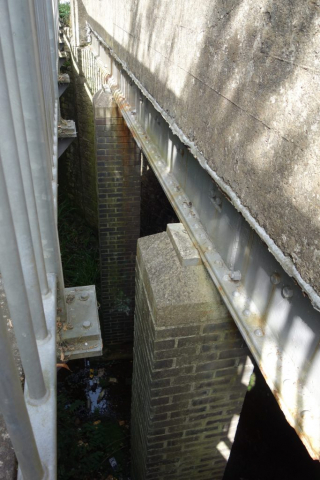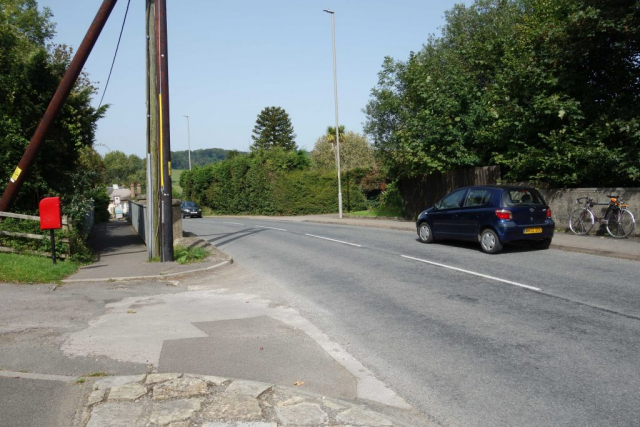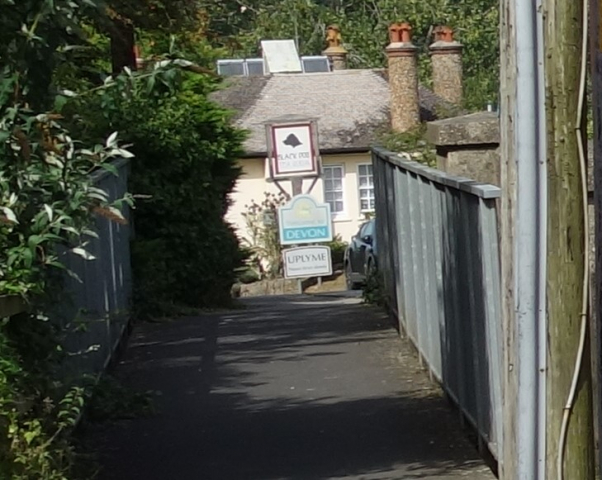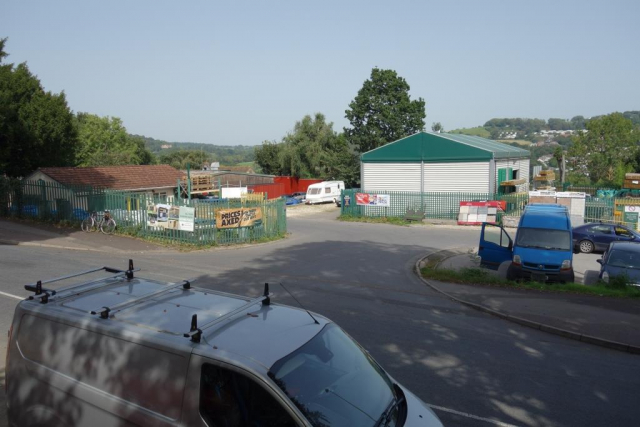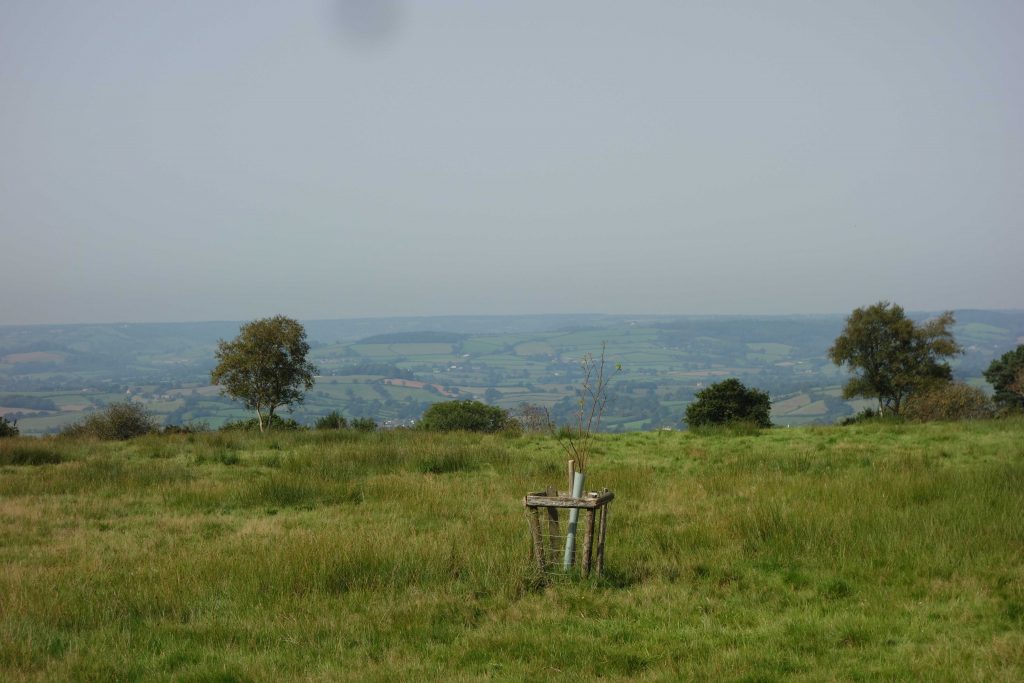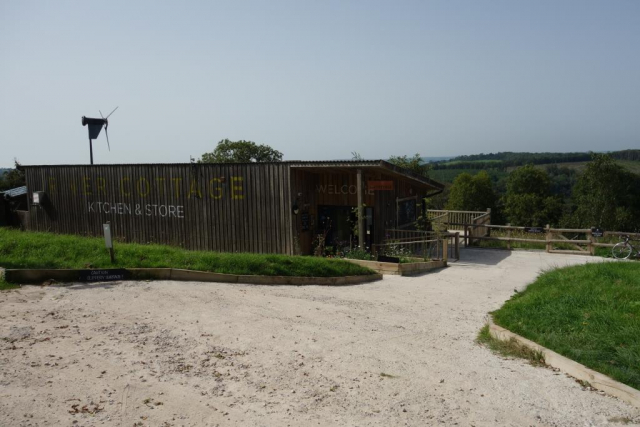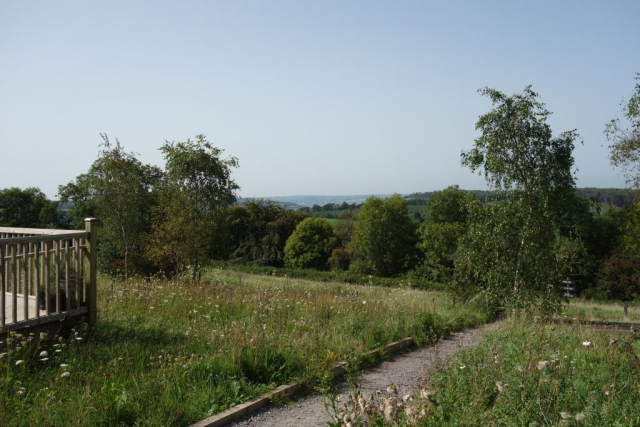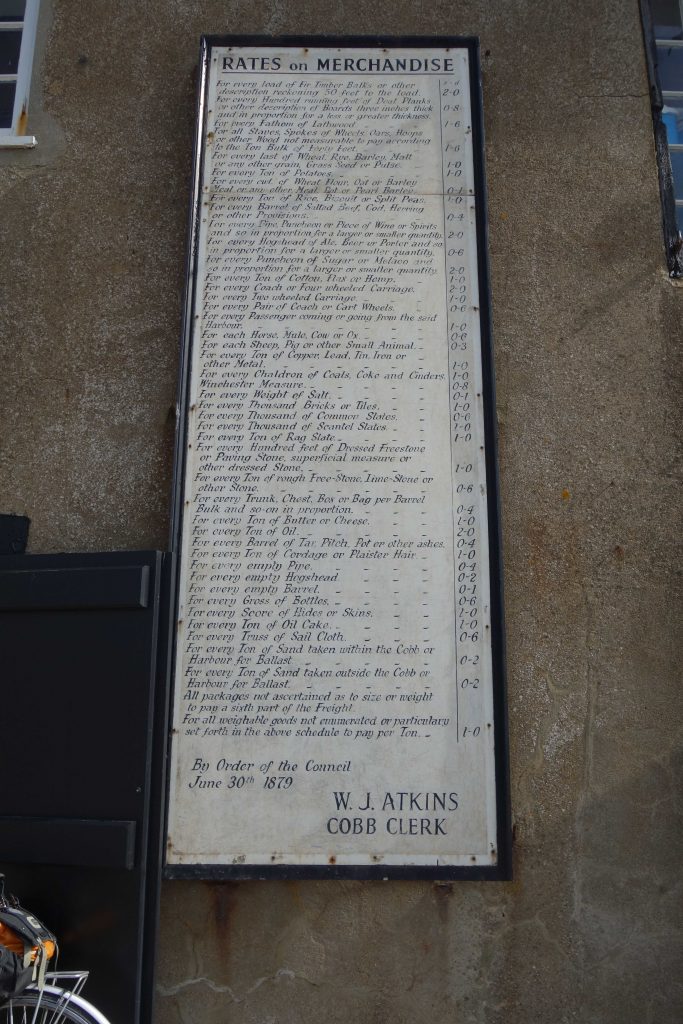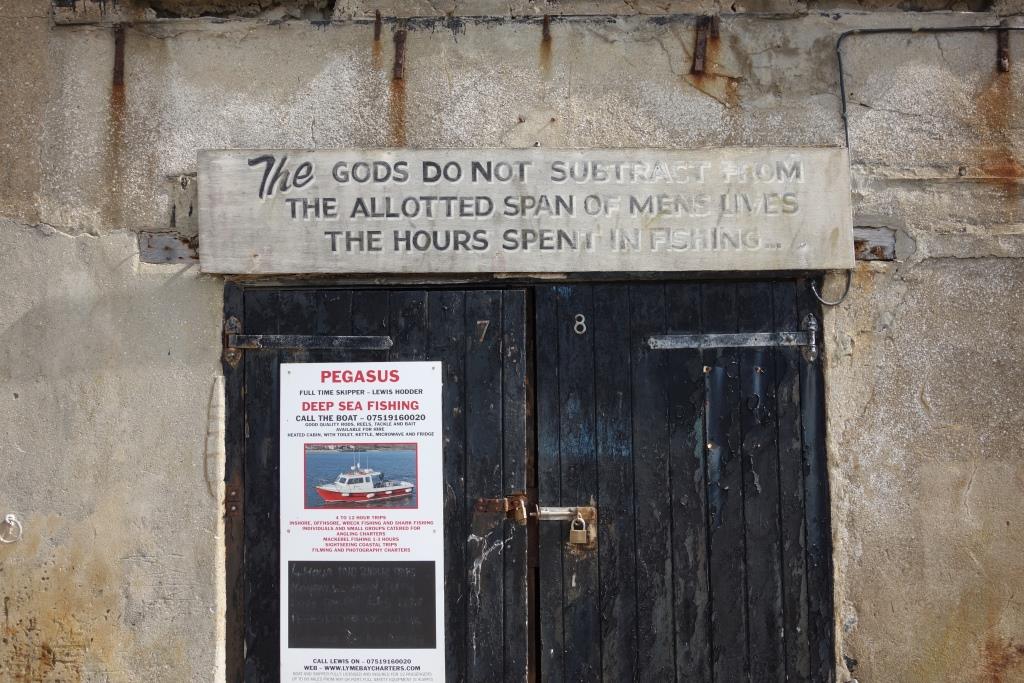After covering other lines with much to see and photograph, the scout thought that the former Southern branch from Axminster to Lyme would be a less demanding ride.
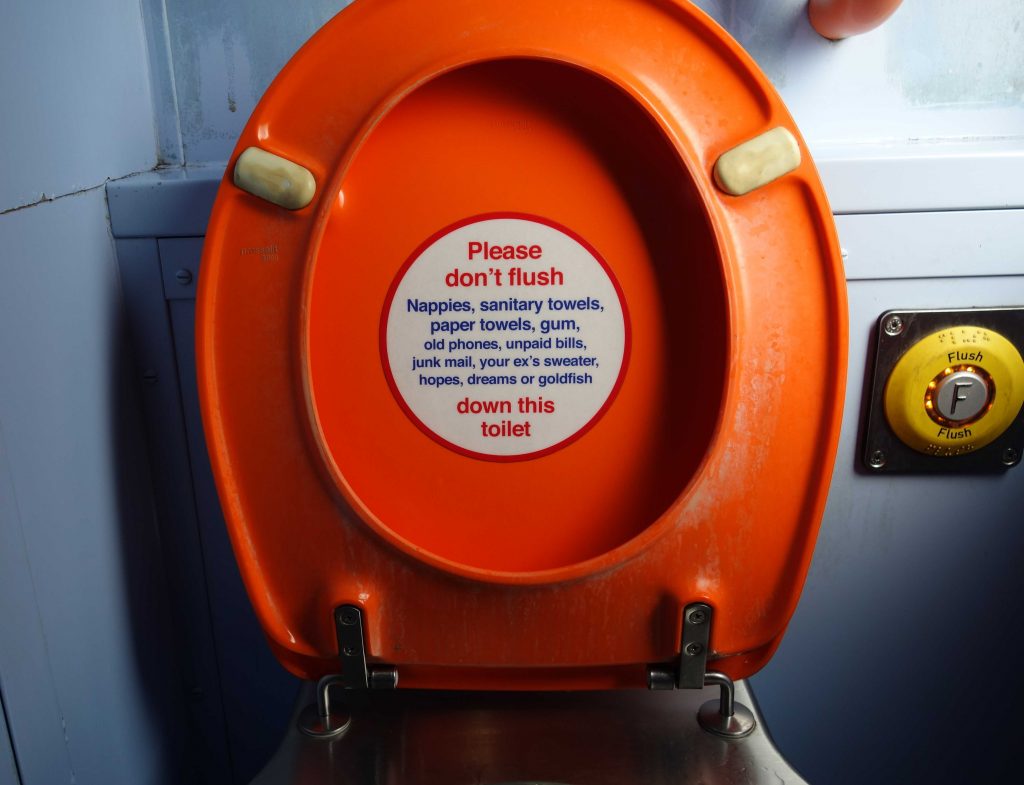
Built as a light railway, the branch was the last but one to open in Devon; if it can be called a Devon line, as the terminus was actually just over the border in Dorset. It was completed before the Teign Valley, which opened in July, 1903, but the Lyme Regis opening was delayed until the following month.
The 0925 Exeter to Waterloo loaded lightly at its early stops and the scout’s was the only bicycle in the rear portion of the six-car train.
Axminster
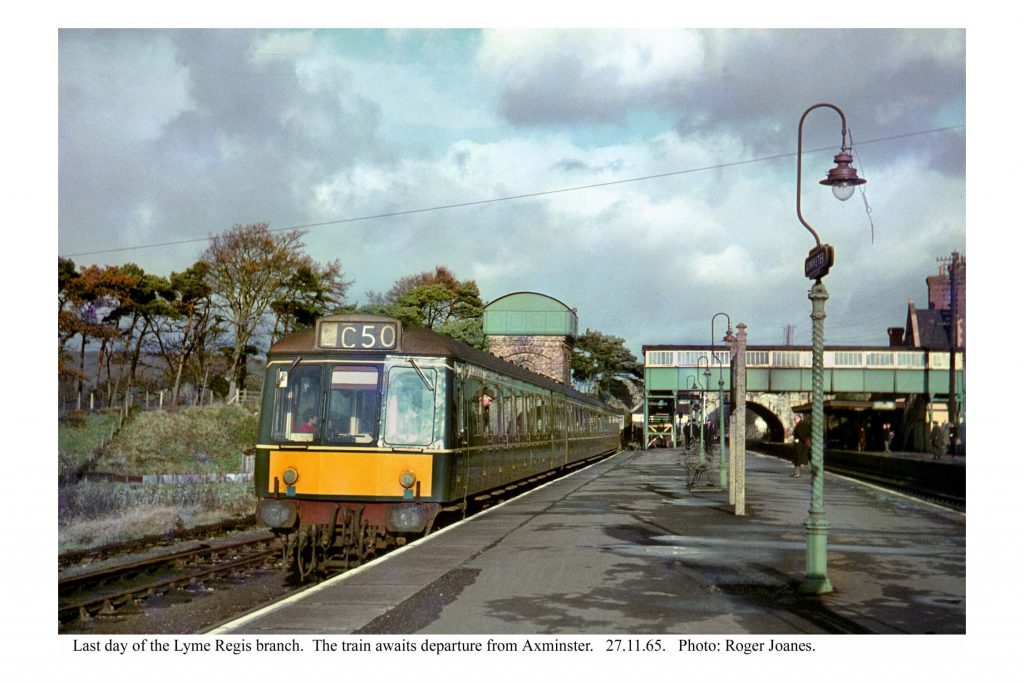
Copyright: Roger Joanes. Shared under Creative Commons. +
As the scout was lurking by “The Ale Way,” four chaps assembled at the front of the station and one held up a telescreen to take a photograph. He clearly was finding it difficult to frame the shot and so the scout offered to assist. The chaps were bemused at the scout’s unfamiliarity with the device that Orwell could not have imagined. Asked what the occasion was, the lead fellow introduced himself as Simon, the Member of Parliament for East Devon. “Simon Jupp,” said the scout, “the man who robbed the seat from the lovely Claire Wright.”
Juppy pointed out that Claire had not won, but he did agree that her getting nearly 26,000 votes as an independent candidate was commendable. He also agreed that she had been highly conscientious and outspoken and told the scout that she had withdrawn from politics.
“You were drafted in to replace the nasty face [Hugo Swire] of Conservatism. It must be hard being the nice face,” goaded the scout. A friendly chat about local issues ensued and the M.P. asked where the scout was going. He replied that he intended to follow the branch line to Lyme Regis. He was thanked again for his help and wished a safe ride.
The group photograph has not appeared on any of the M.P’s. publicity pages and the scout wonders now whether he pressed the right button on the screen.
The A358, which today leads from the roundabout outside the station towards Seaton took part of Whit Pot Lane leading to Musbury Road. From Whit Pot, now Widepost, Lane, a service road led to premises wanting access to rail. The scout followed this to the gates of the celebrated Axminster Carpets, whose name he had most recently read in connection with restoration work done for the National Trust.
Across the car park, he spotted the gate of a foot crossing which he had missed from the train.
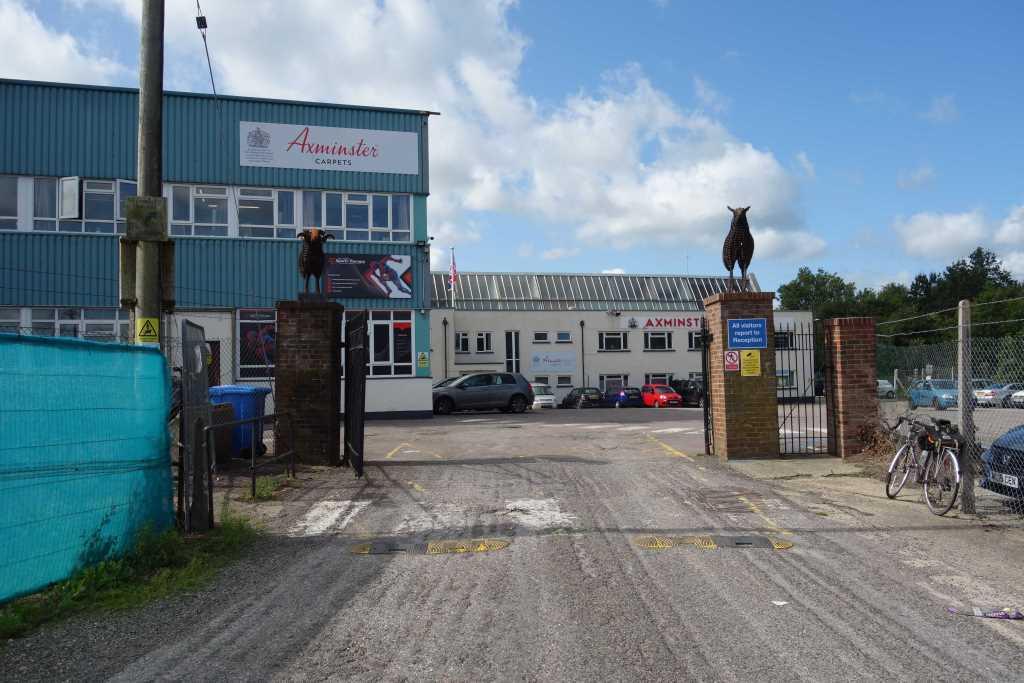
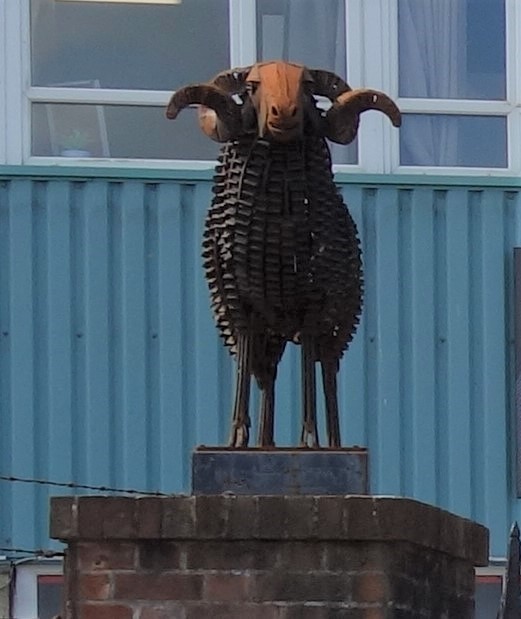
The firm once sent its products by rail. There is still a strong connection with the industry, though, as Axminster is the largest supplier of woollen carpets used in U.K. trains.
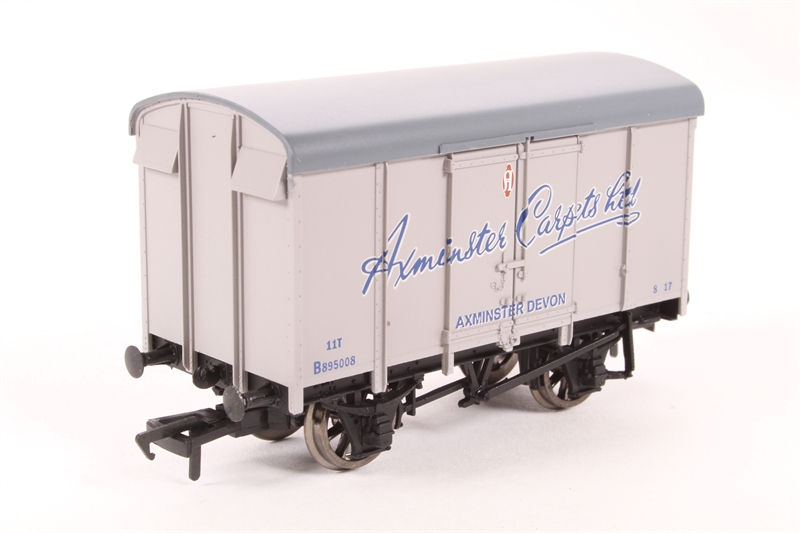
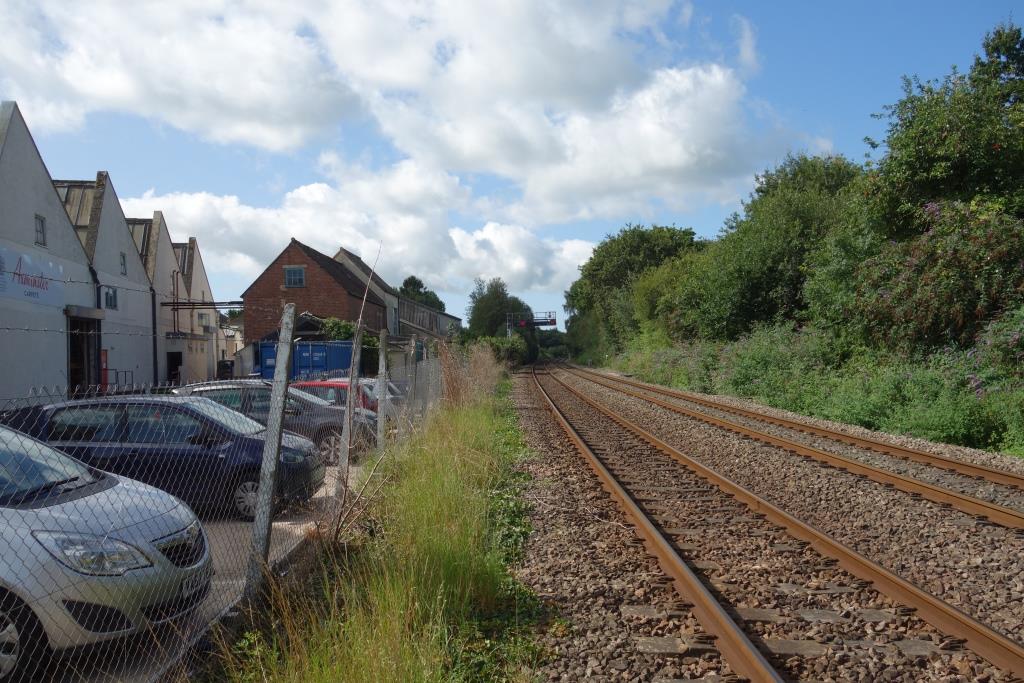
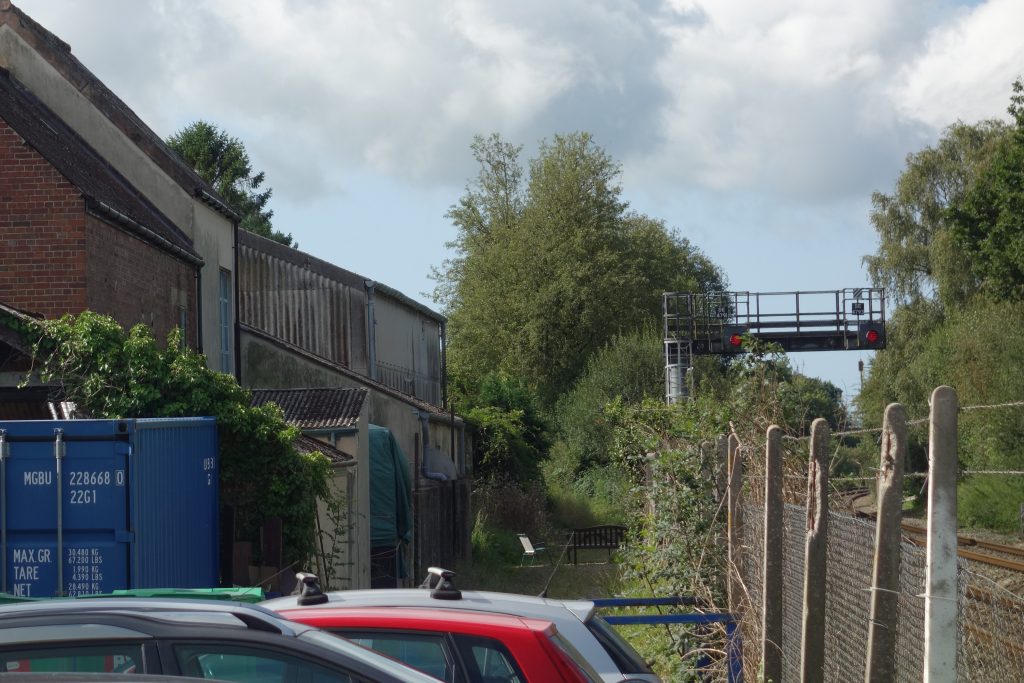
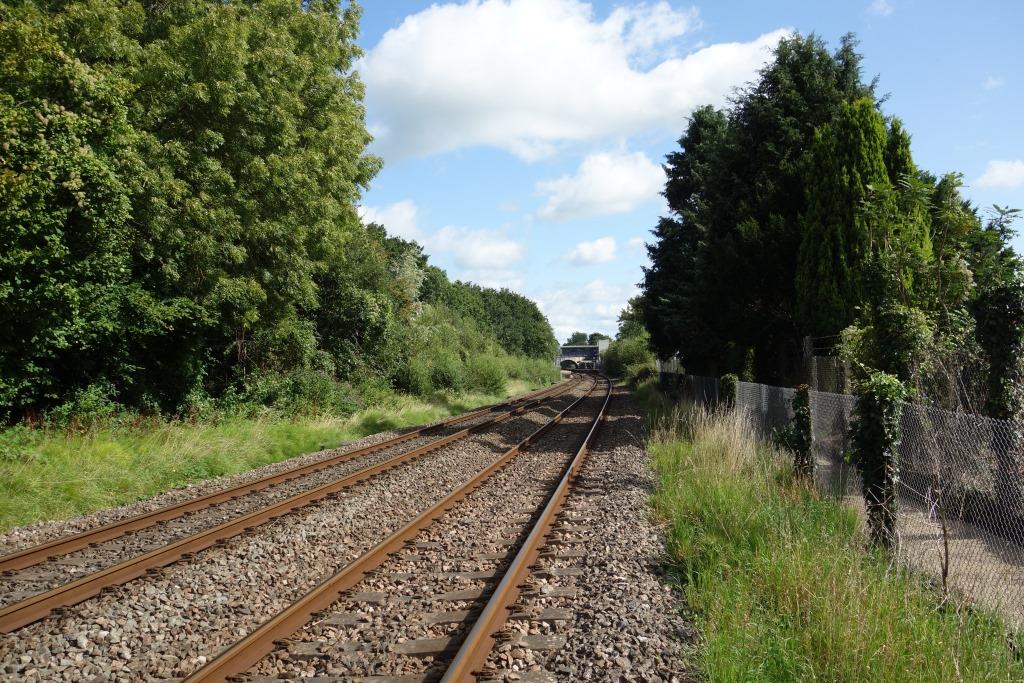
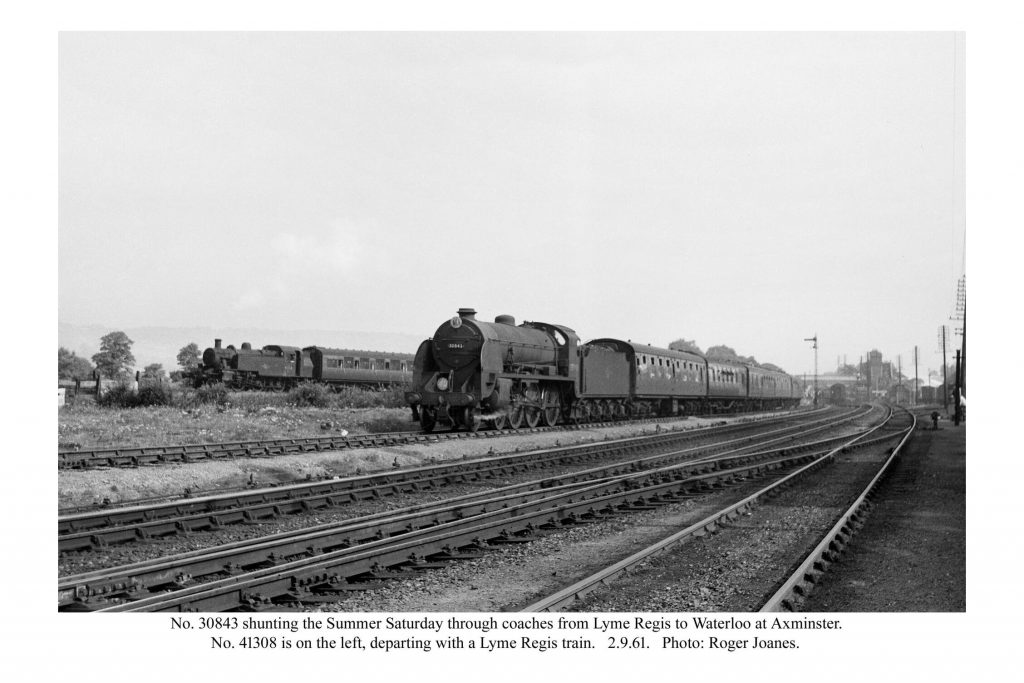
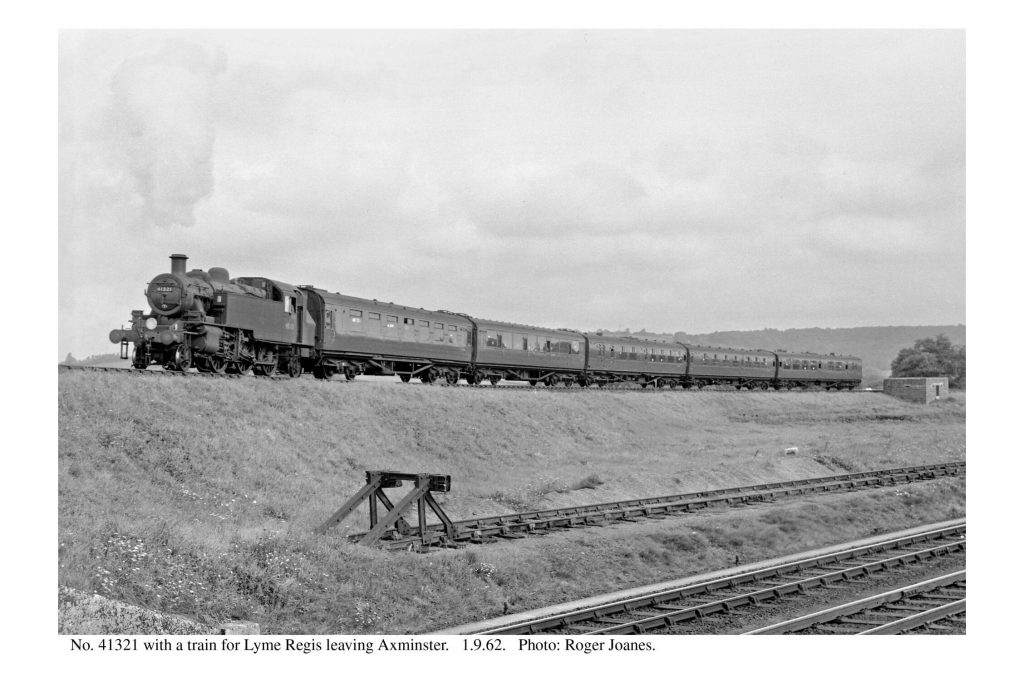
Copyright: Roger Joanes. Shared under Creative Commons. +
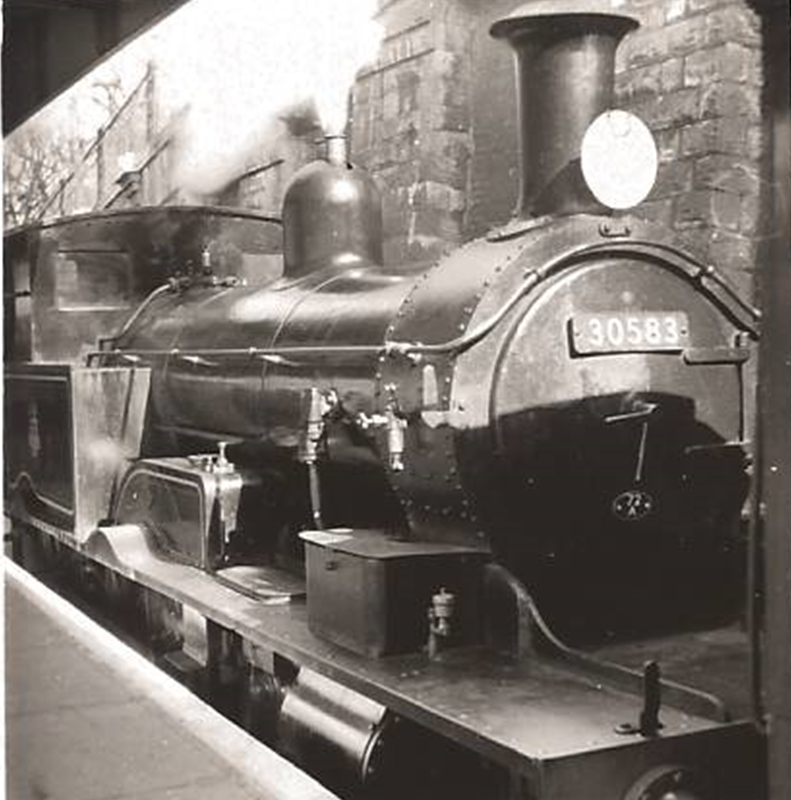
Railway Roundabout visited in 1960 to film the last year of service of the Adams “radials,” the 4-4-2T engines whose tenure had come about in 1913 because their articulated trailing axles made them particularly suited to the severe curvature of this line.
In a breach of copyright, the section of the Railway Roundabout film, which is kept as part of a DVD “boxed set” at Christow, has been posted on the Tube. It fascinates the scout, watching the Fireman, at 1:45, replace the water tank cover and then deftly drop from the bunker to the cab.
The only survivor of the three allocated to Exmouth Junction, No. 30583, bought back by the Southern from the East Kent Light Railway in 1946, is now on the Bluebell Line. It has already appeared on these pages under “Exmouth Branch.”
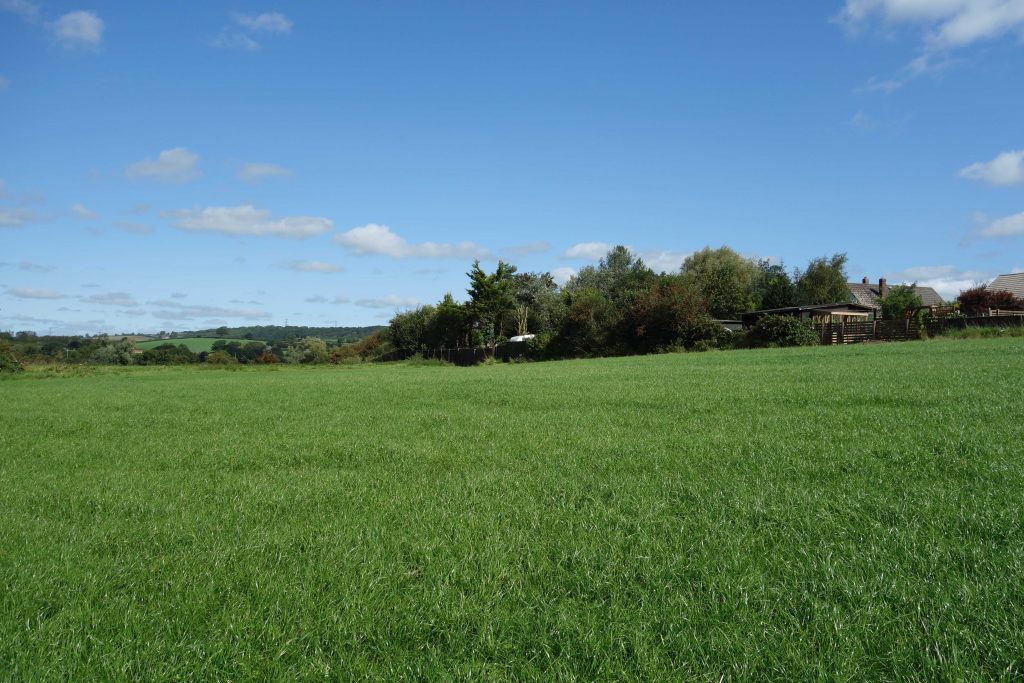
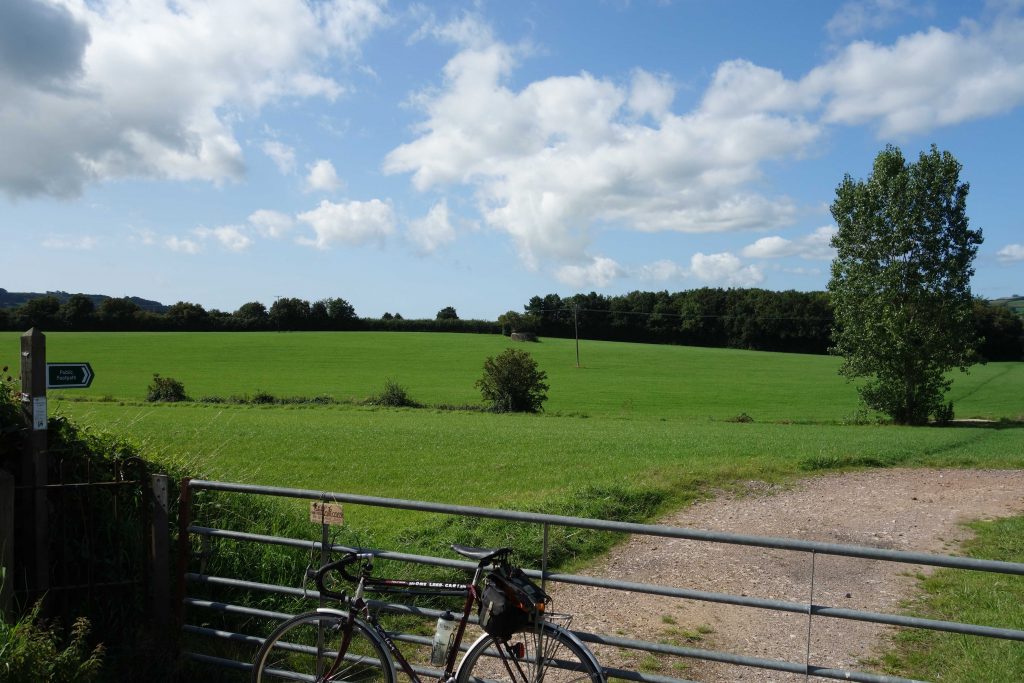
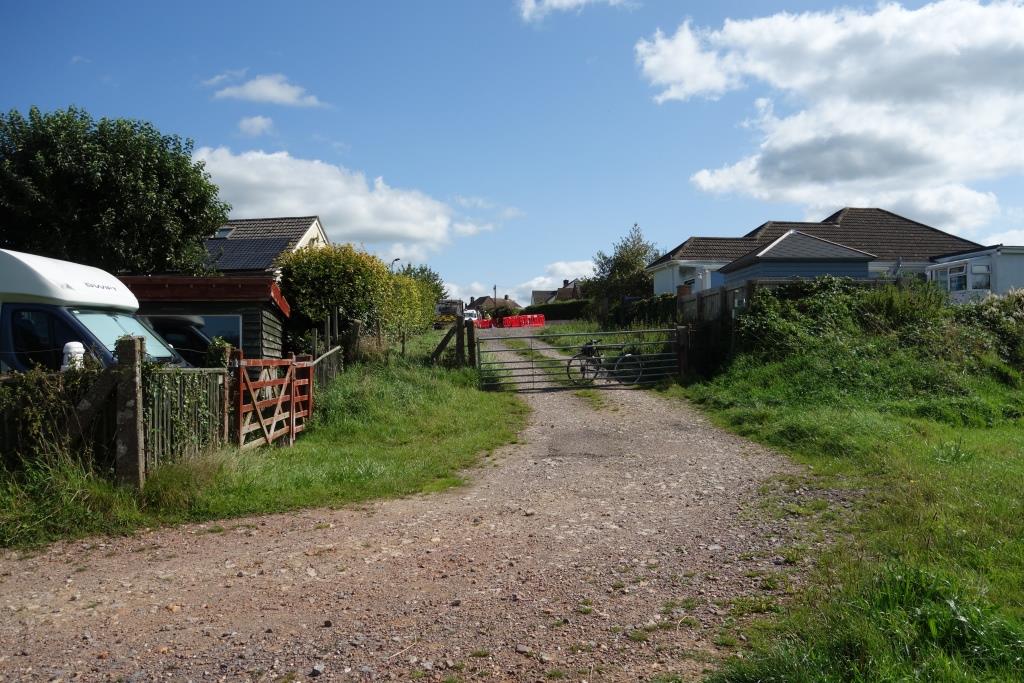
The scout escaped from the housing estate and rode off towards Musbury.
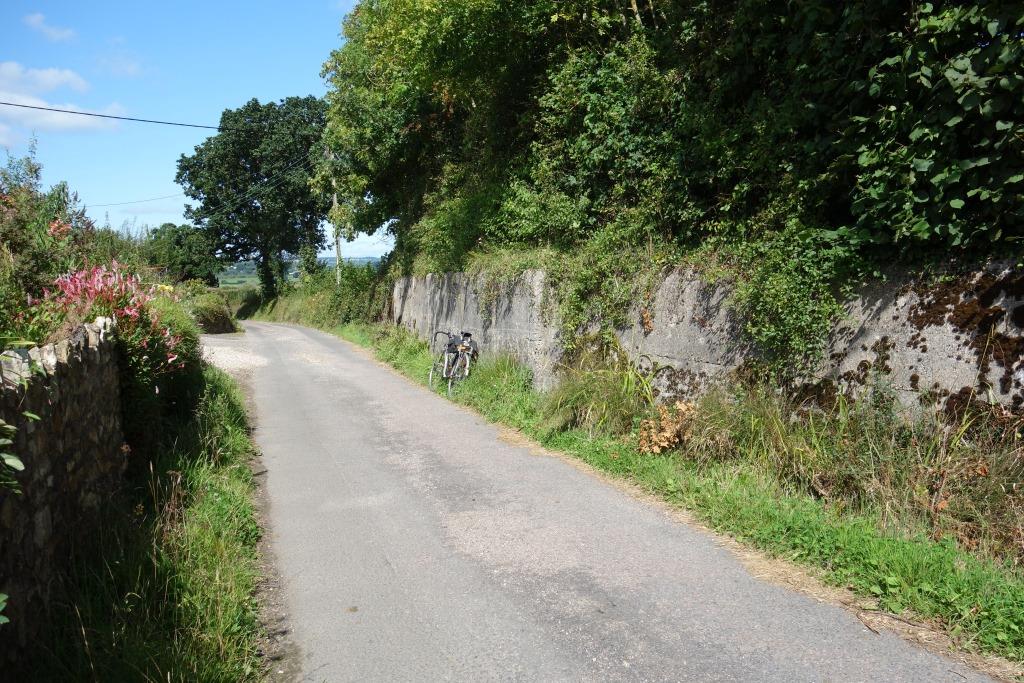
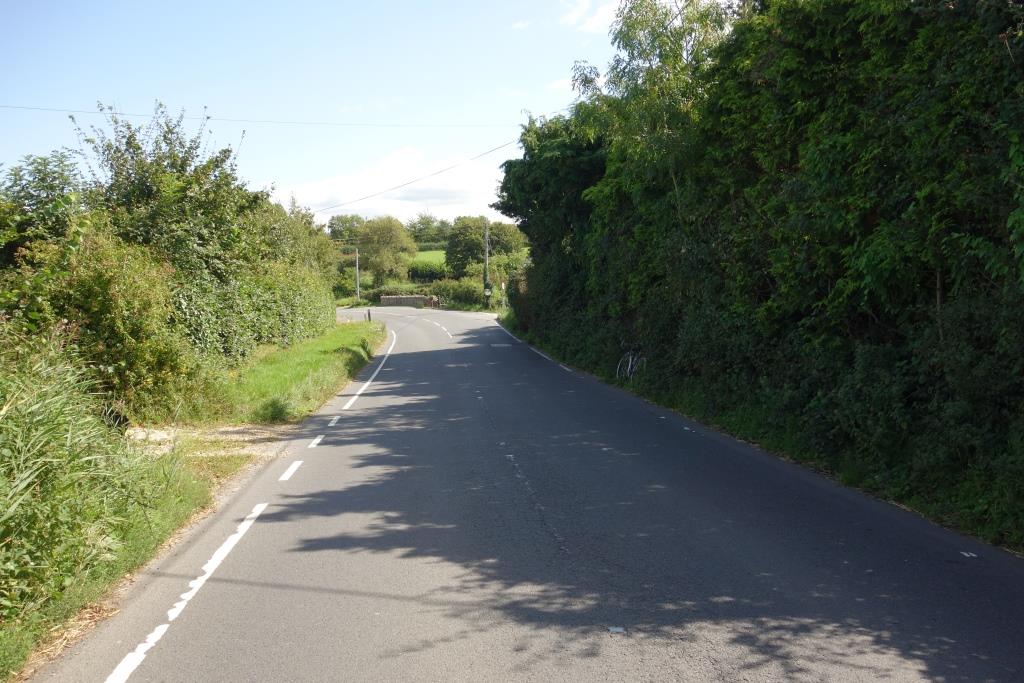
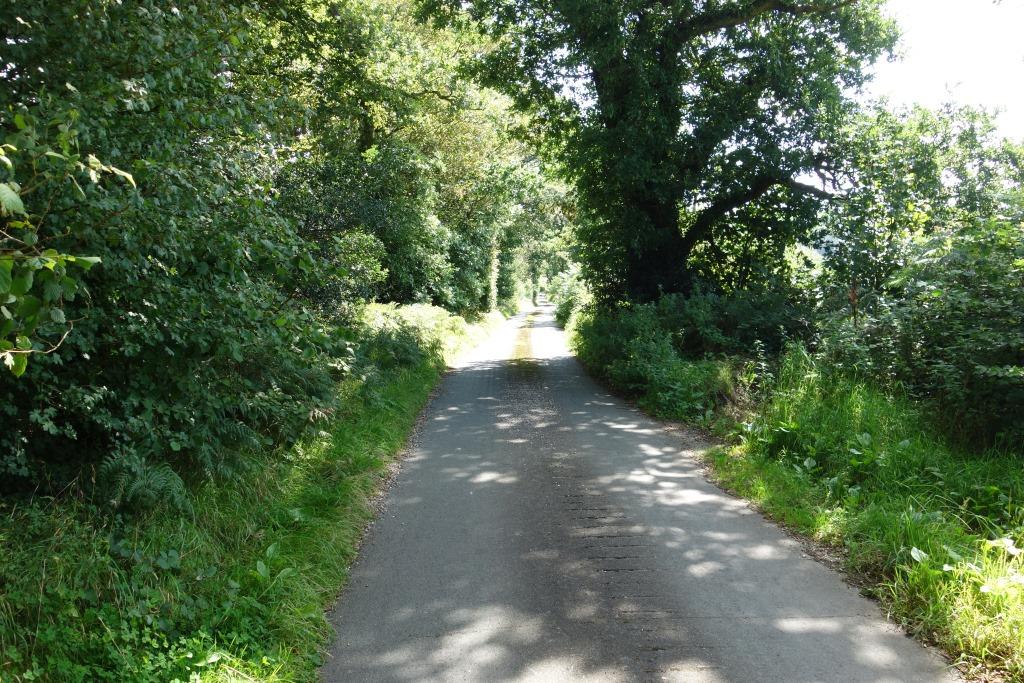
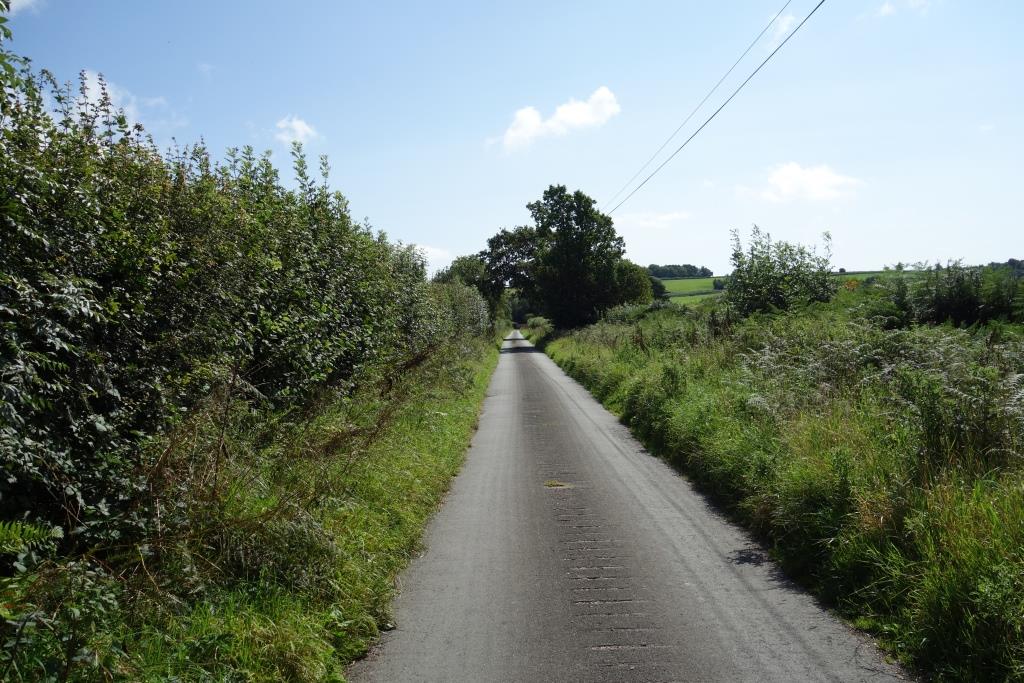
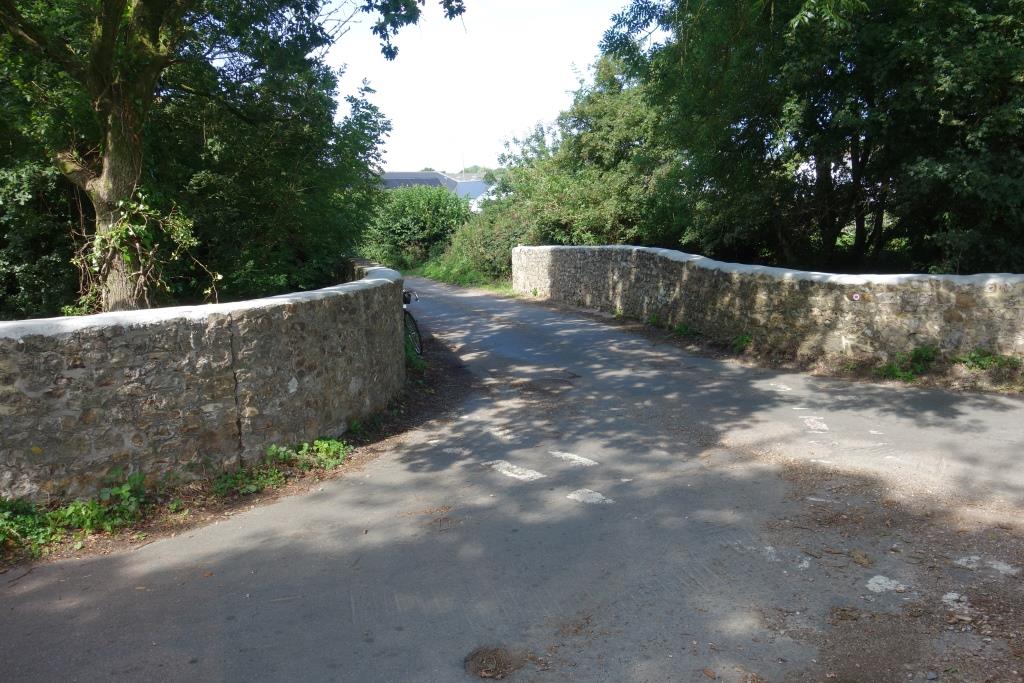
National Highways contractors have been at work here, judging by the new cement cappings to the chert parapets.
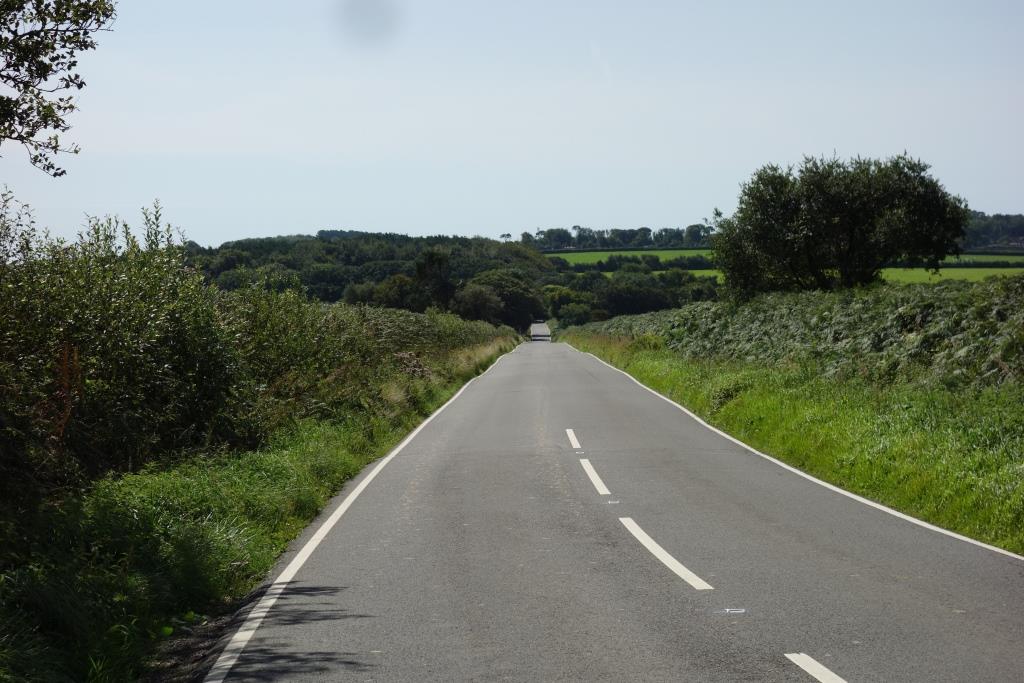
Combpyne
After photographing the bridge on Trinity Hill Road, the Cybershot’s battery died at the entrance to the former station. The scout was sure he had charged it and he now regretted not picking up the spare.
According to the R.C.H. Official Hand-Book of Stations, as well as handling goods and passenger traffic, the station could also accommodate “Horse Boxes and Prize Cattle Vans.” A chute would normally be needed for “Carriages and Motor Cars by Passenger or Parcels Train,” but one is not seen in photographs.
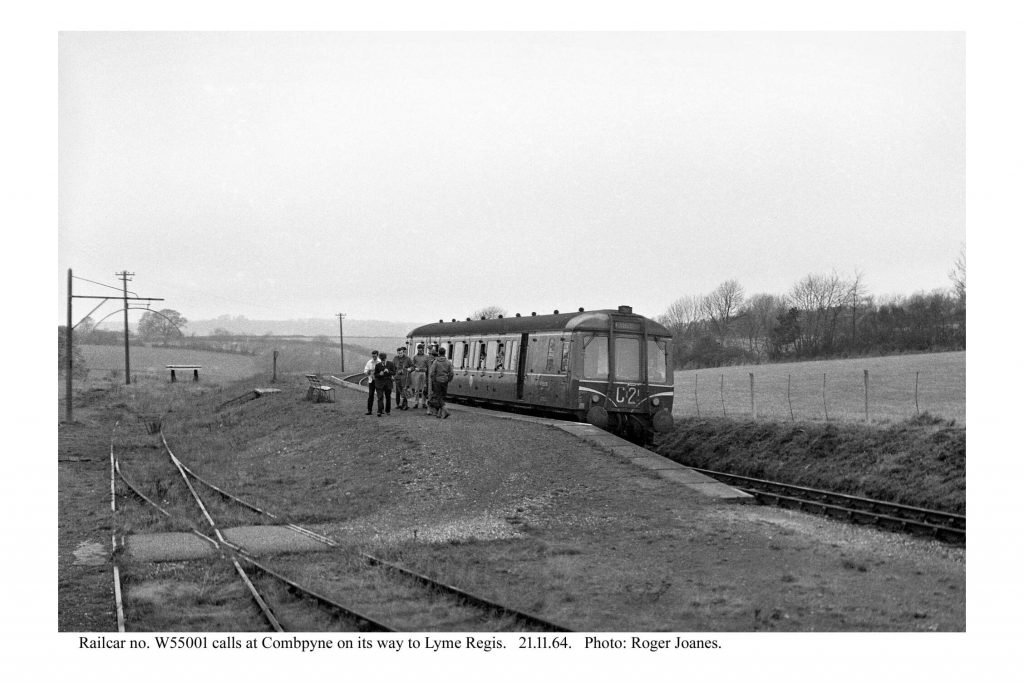
A camping coach was berthed at the end of the siding in latter years. Drinking water was sent from Lyme Regis in churns, along with those for the station and Station Master’s house.
The foot crossing led to the station building, off camera at left. That “frog” in the turnout would be seen as a serious hazard today.
Copyright: Roger Joanes. Shared under Creative Commons. +
September, 2023:
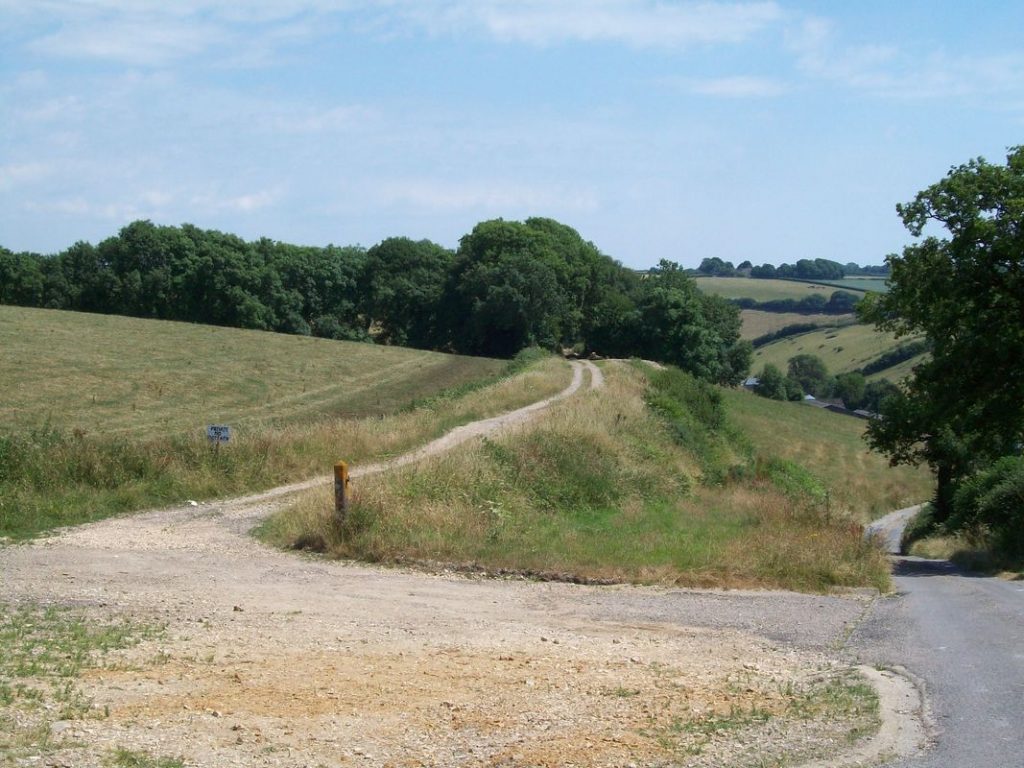
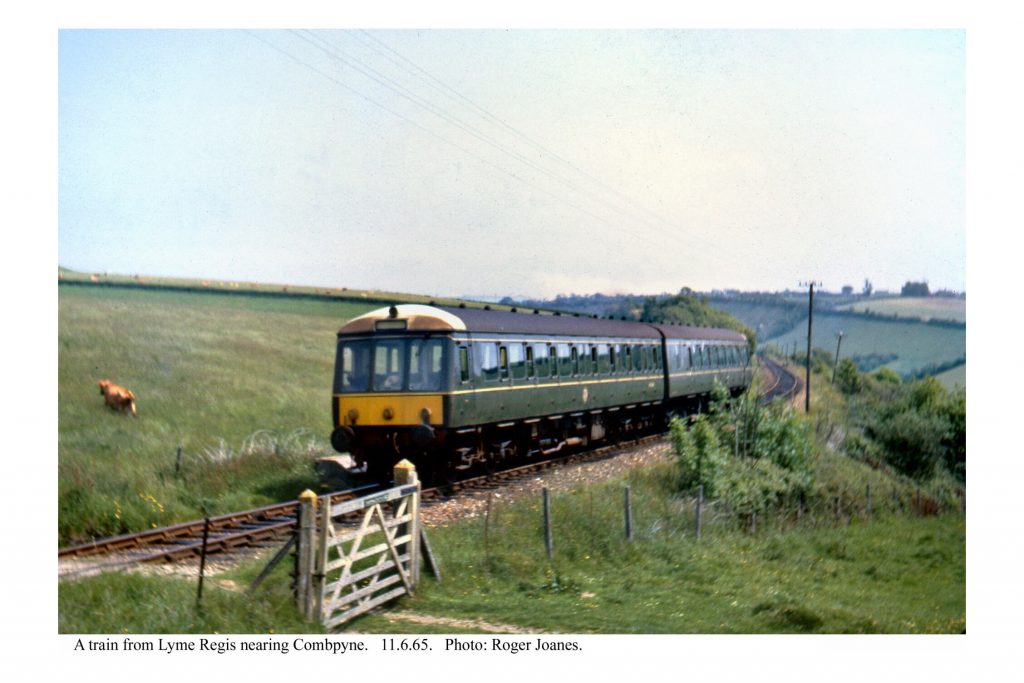
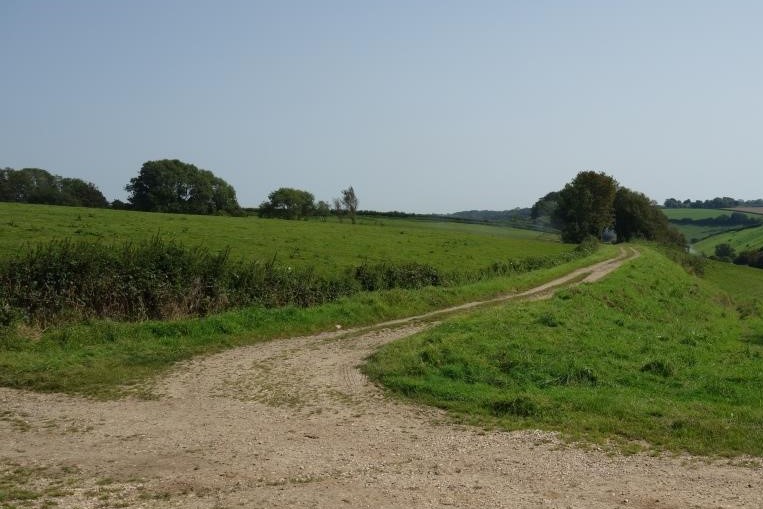
Cannington Viaduct
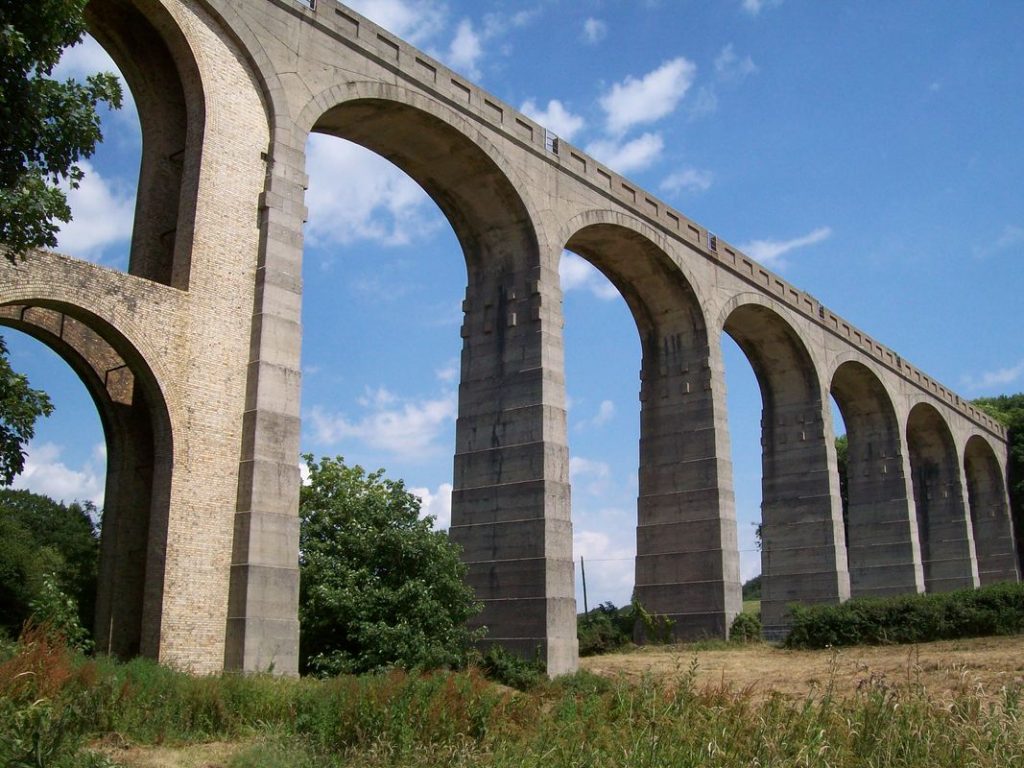
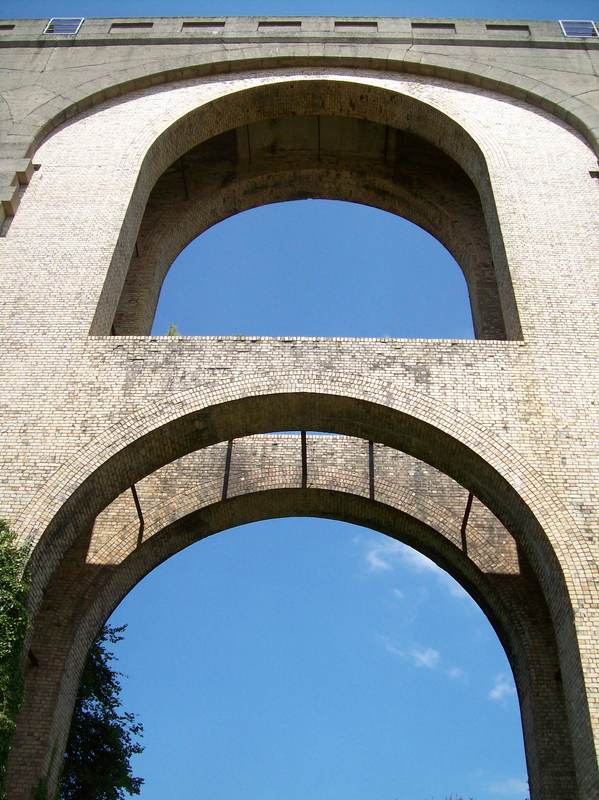
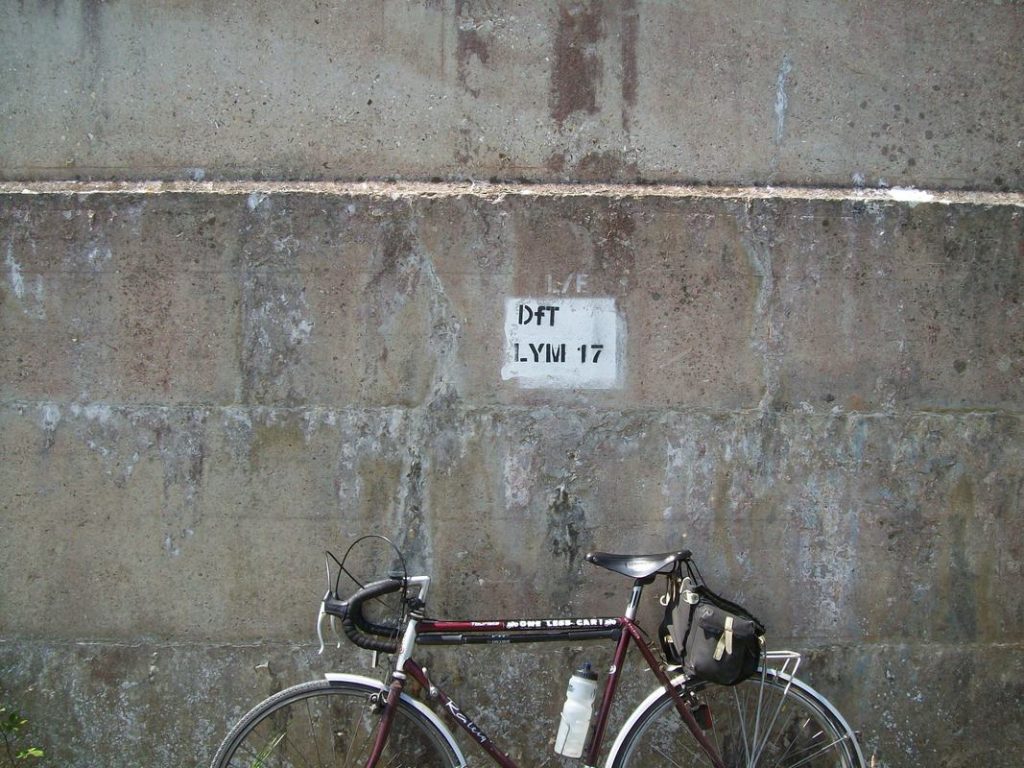
In September, 2023, the scout rode down the very rough lane from Combpyne and took these shots after the viaduct came into view.
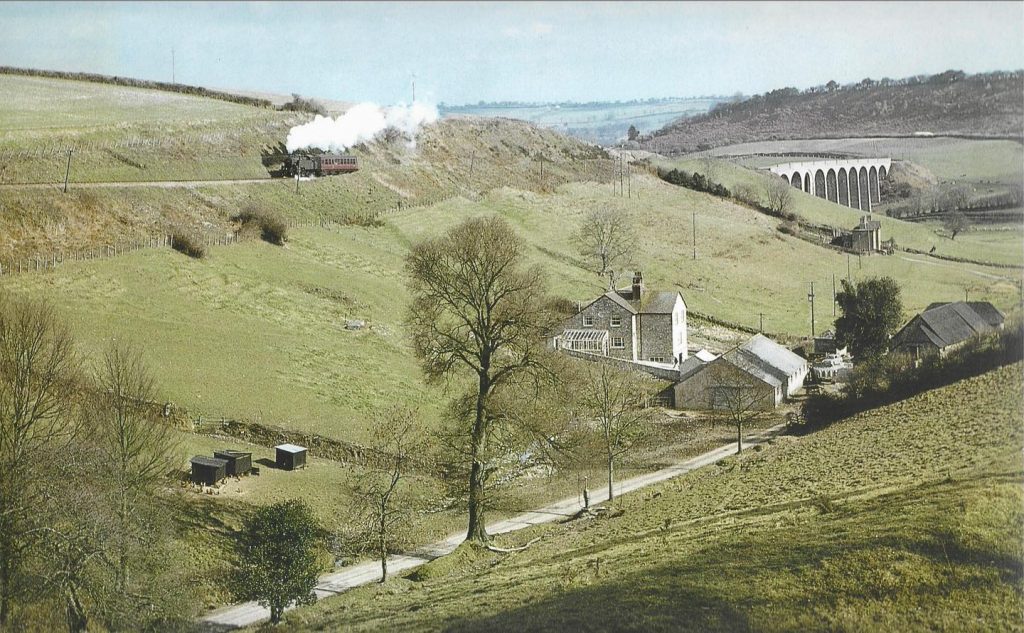
(Date and photographer unknown).
The huge brick walls and arches are the most obvious sign of the remedial work which had to be done, but the scout found the other elements that were necessary to stabilize the structure.
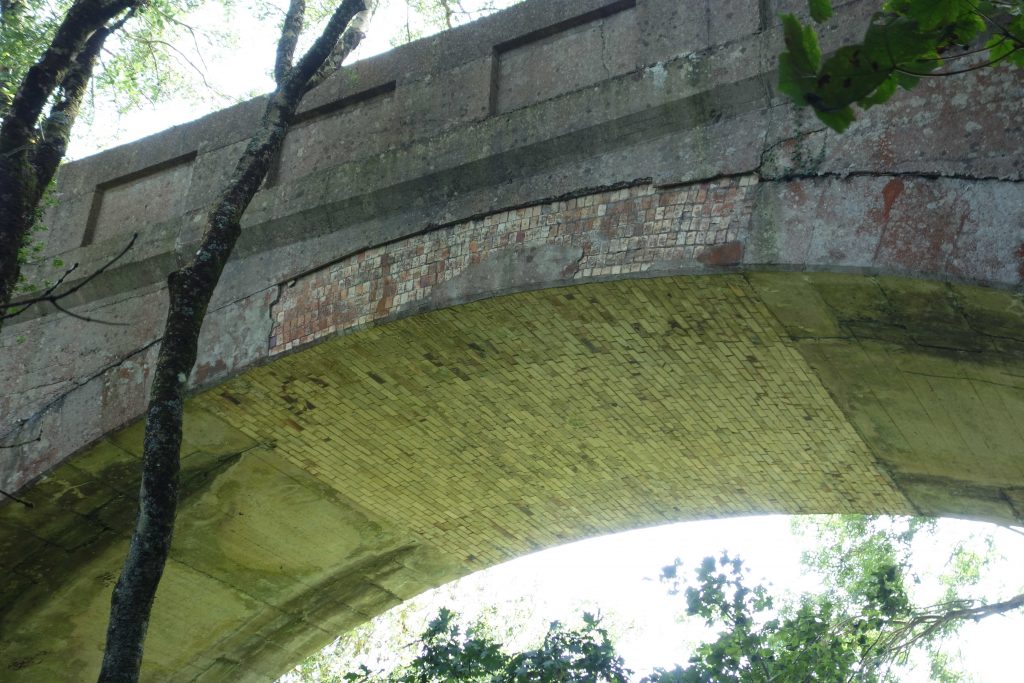
Lyme Regis
The running-in board was originally suffixed “for Charmouth.” The coastal village lies to the east of Lyme, about three miles from the former station.
The scout remembered seeing the derelict station when he went with the school canoeing club one winter in the early 1970s. The town was windswept and boarded up when he and a chum slunk off in search of a fag and a cup of tea.
The Axminster clerk, one of the scout’s old pals, who did the final “book-up” at Seaton also came here in 1965 to do the same.
The station building was dismantled in 1979 and taken to Alresford on the “Watercress Line.”
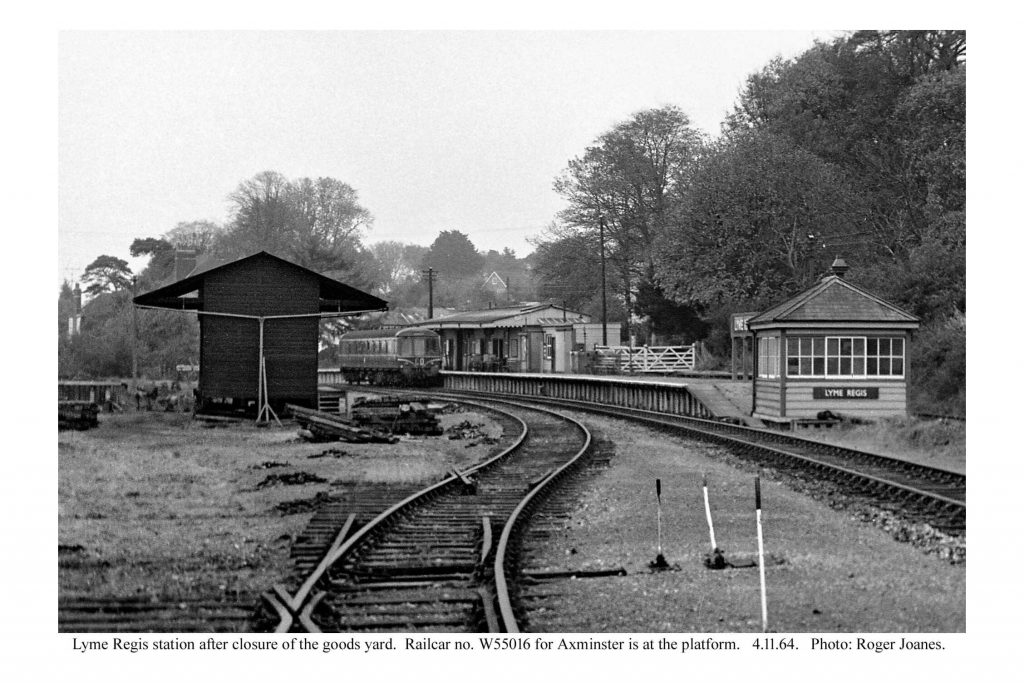
Copyright: Roger Joanes. Shared under Creative Commons. +
September, 2023: The entrance to the station was at the far end of the site. This new entrance serves the small trading estate that has taken the railway’s place.
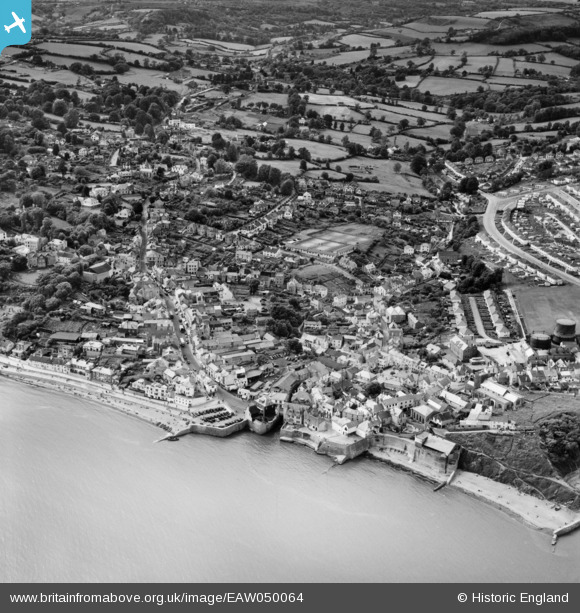
Uplyme Road leads to Silver Street and Broad Street comes right to the front, where the Assembly Rooms once stood on a promontory of the sea wall. The building was demolished in 1927 to make way for a car park, which can be seen.
The famous Cobb is off camera at left. The gas works can be seen at right and a new housing estate and Anning Road above. Mary Anning was the pioneering palaeontologist and fossil collector whose name, deservedly, was made in the town.
The scout looked in vain for a shop where he might get the railway’s camera battery charged and then went to the Co-op to buy some lunch. At the bottom of the hill, a poor fellow on a small mobility scooter had got into trouble, with one rear wheel on the pavement and one on the road. A chap was trying to help while the occupants of a great black Wankmobile stuck in the traffic right next to him ignored the old boy’s plight. The scout had difficulty getting his bike to stand still on the hill, but soon lifted the scooter and its driver onto the pavement.
Marine Parade was perfect for people-watching while the scout ate his lunch and read his magazine in the sun. Afterwards he wandered down to the Boat Building Academy. The scout thinks that this is where he came with the school and that it was the St. Albans Outdoor Centre from which another school canoeing group had set off thirty years ago. Four teenagers losing their lives led to changes in the accreditation of activity centres.
Then he ambled along the Cobb before climbing Charmouth Road. He took the old turnpike at Colway Gate, whence the new A3052 makes an easier ascent. He shot down into Charmouth and went straight to the front to marvel again at the cliffs, particularly Golden Cap. Along the coast to the east he could see West Bay and Portland.
He did not stay long and within minutes of leaving the motoring horde he was in what could have been deepest Dorset on his own. In fact, he was in Dorset until he reached Monkton Wyld Cross, from where it was mostly downhill all the way to Axminster.
When he returned to the utilicon, he had ridden 43 miles.
5th September, 2023: An unusually hot spell prompted the scout to go back along the Lyme Regis Branch, this time with a full battery and a spare for the camera.
He took Woodbury Lane from the Musbury road and immediately started climbing the hill.
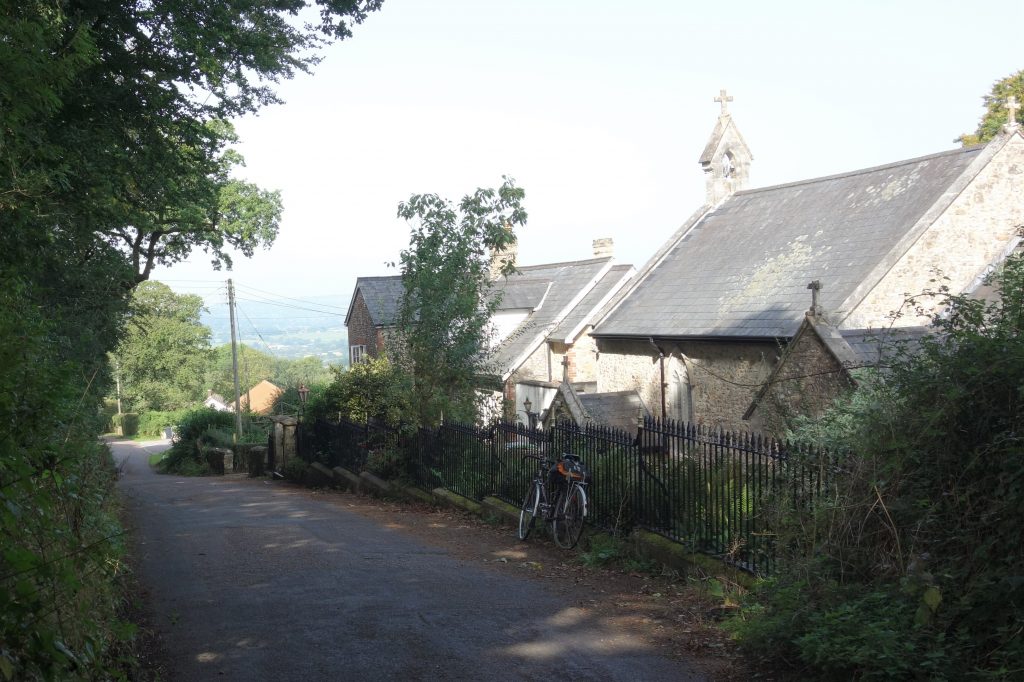
At the top of the lane is a typical muddle of old and new roads, the oldest being Roman or earlier and the newest being the Axminster Bypass, opened in 1991. The scout joined this but soon left it for the relative peace of Trinity Hill Road which would take him towards Combpyne Station.
He stopped to look from a gate on the high ground.
Behind the camera was the car park for the Trinity Hill Nature Reserve. The scout went to observe. Every one of the cars had brought dogs and many of the cars clearly had been chosen for dogs. Several cars arrived in the short time the scout lurked there. Side doors or hatches were opened and dogs leapt for freedom while their owners shouted useless commands.
None of these people who drive miles every day to exercise their pets at beauty spots would see this as a quite unnecessary use of self-centred transport. Nothing—the cost of the vehicles and fuel, price inflation, mortgage rates, exhortations about making less use of cars, etc.—seems to affect this ridiculous extravagance.
Not much further on, the scout came upon the “H.Q.” of celebrity chef, Hugh Fearnley-Whittingstall, which the scout had thought was in Dorset.
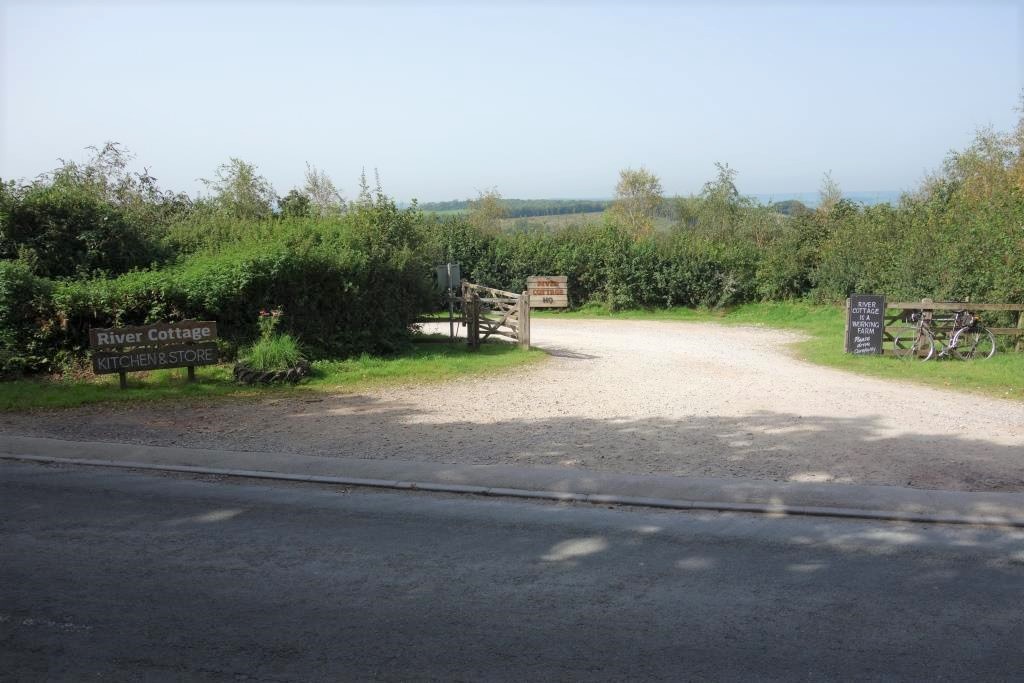
The path led to the track which descended to what the scout thought was River Cottage, despite there being no river.
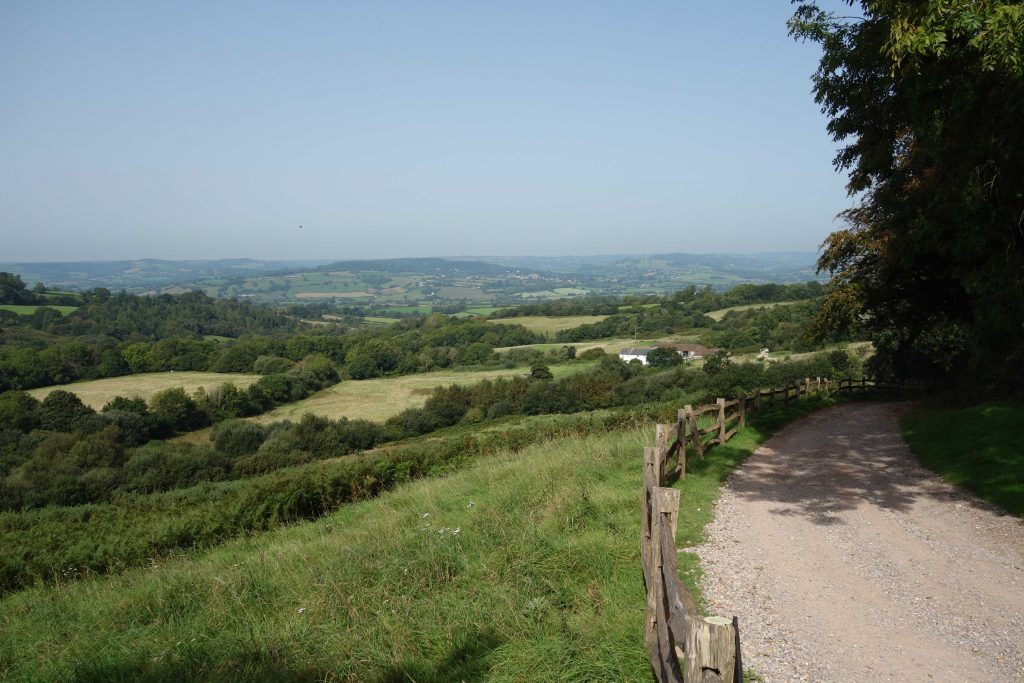
In the trees beside the field at far left is the course of the light railway. +
The young lady’s every sentence began with “so,” even the answer to the scout’s remark that “Hughie was never the same after he had had his hair cut.” She was unsure as to why the campaigner was not as prominent as he had once been, but she assured the scout that Hugh was as passionate as ever about food and farming.
A chap was leaning on the fence where the scout locked his bike. He and his wife were on a short break, staying somewhere on the farm. He had a car but they had chosen to come by train. Their taxi arrived and the missus called to him, perhaps fearful that he might be corrupted by the unmarried fellow.
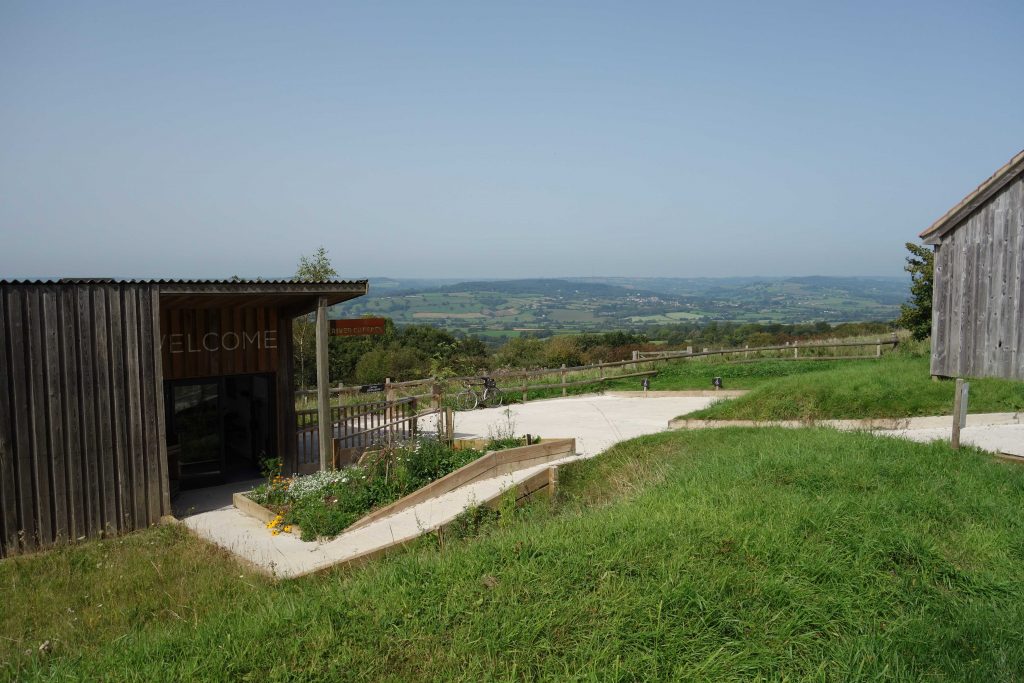
The scout pushed a note across the counter to pay for his £3 cup of coffee but was told by another dear that cash was not accepted. The scout very nearly told her what she could do with the coffee, but handed her his debit card while issuing a dire warning about what was to come for her generation. He finished with: “Tell Hughie that I disapprove.”
Kilmington can be seen in the distance. +
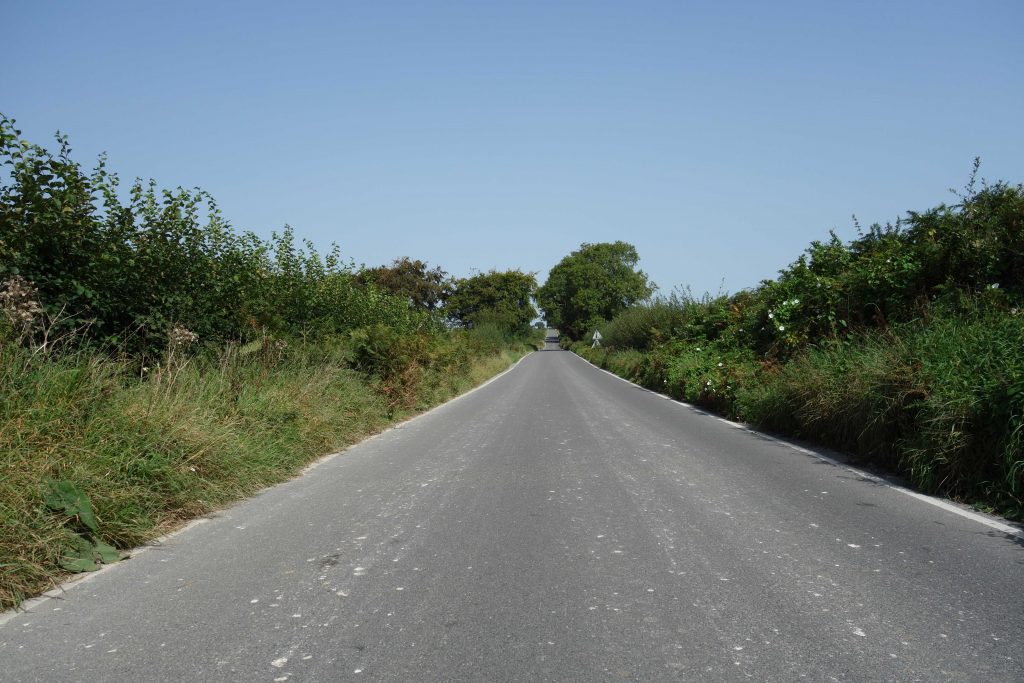
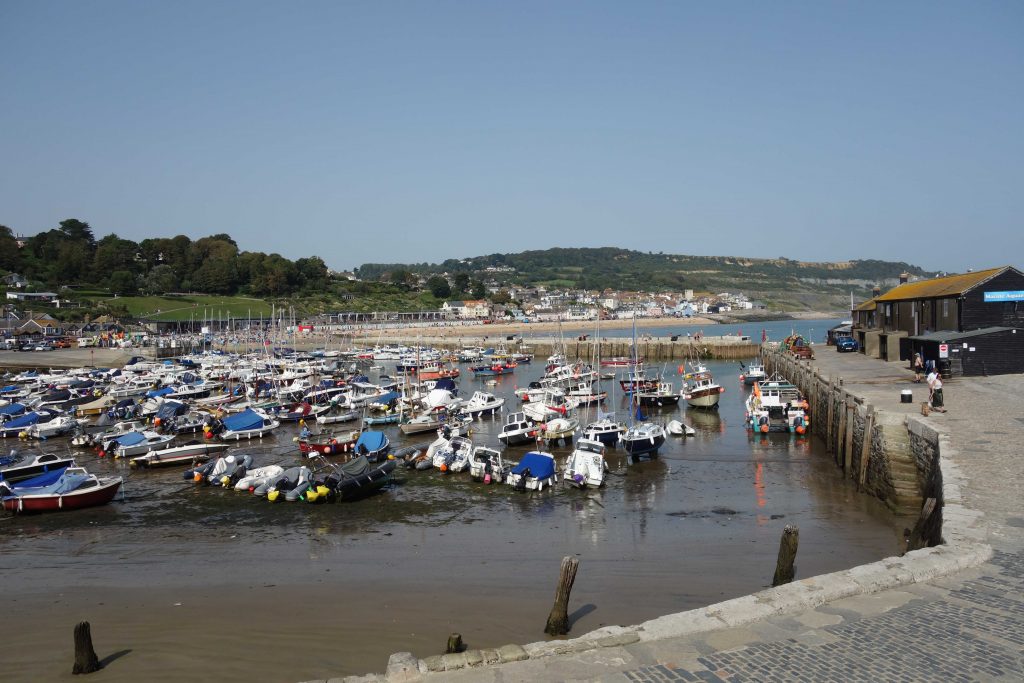
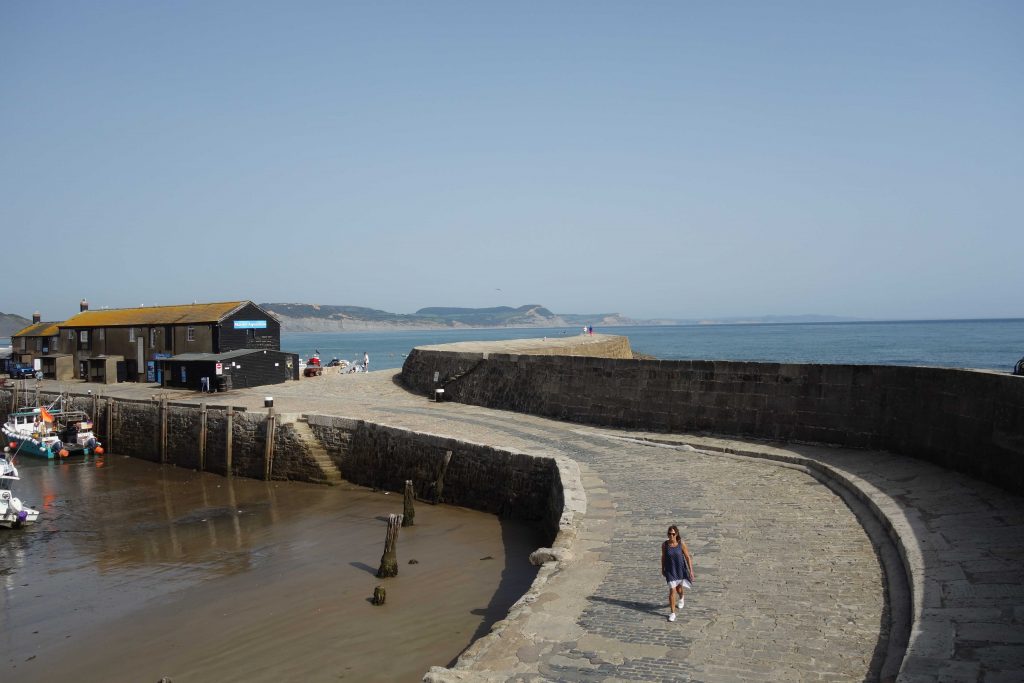
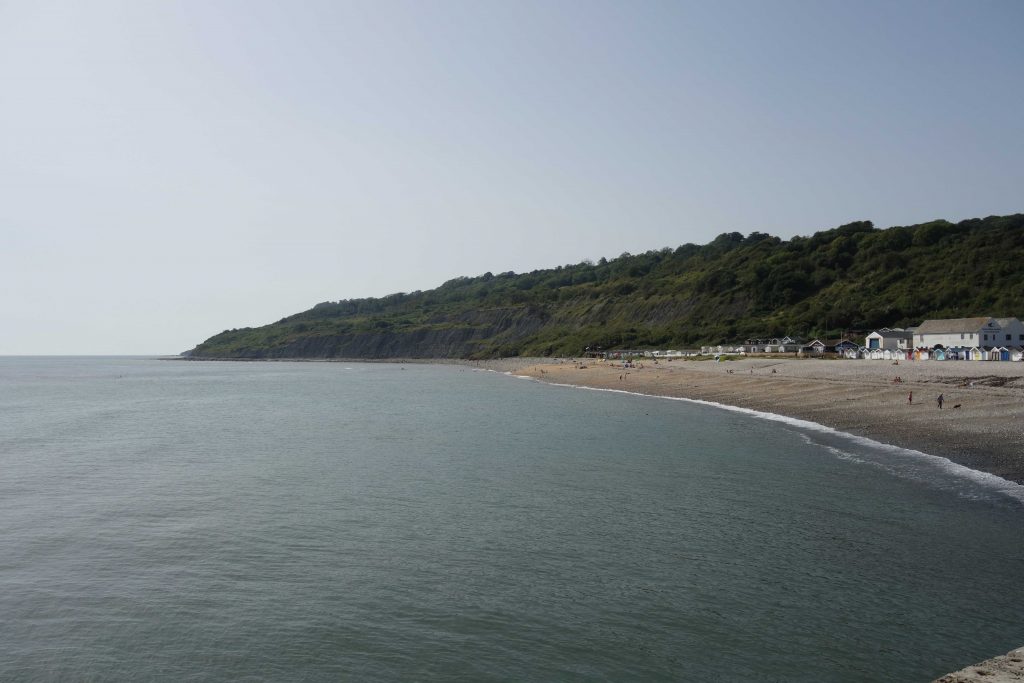
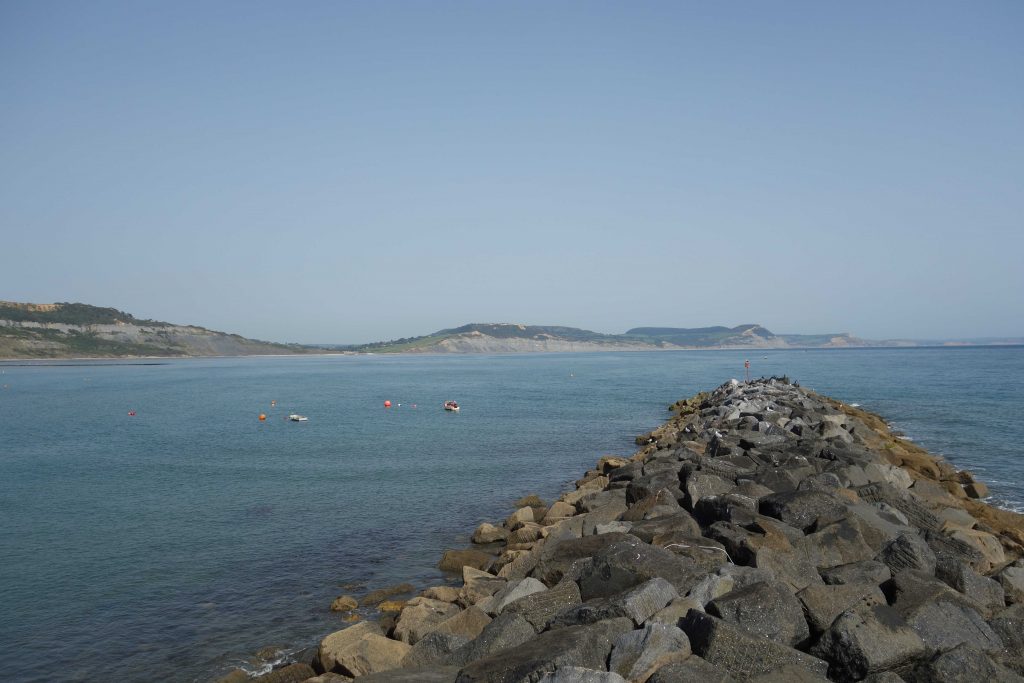
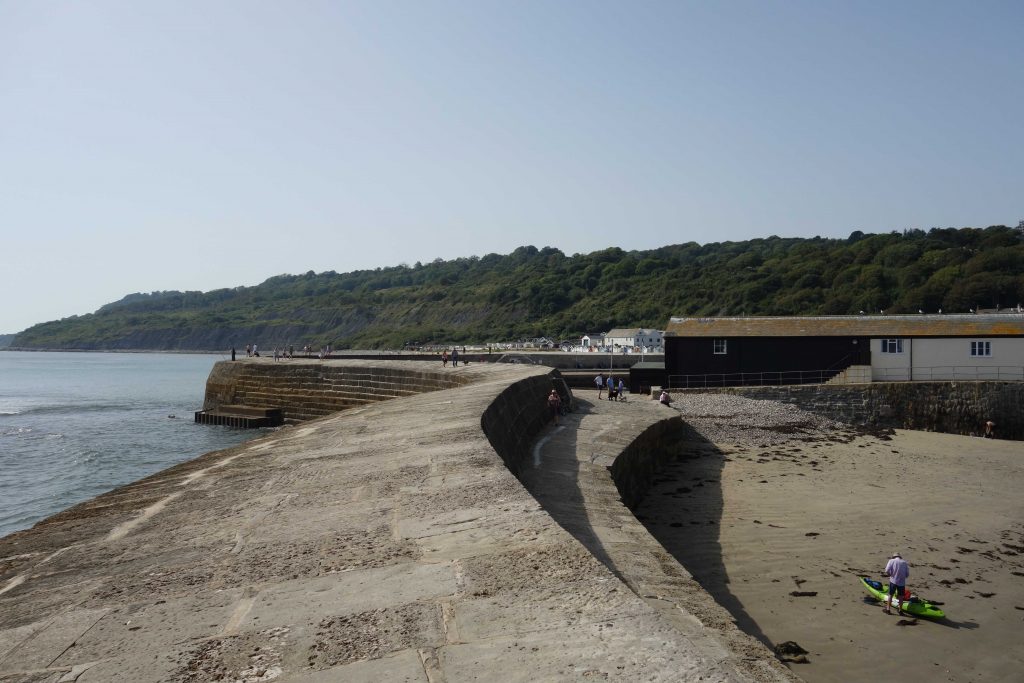
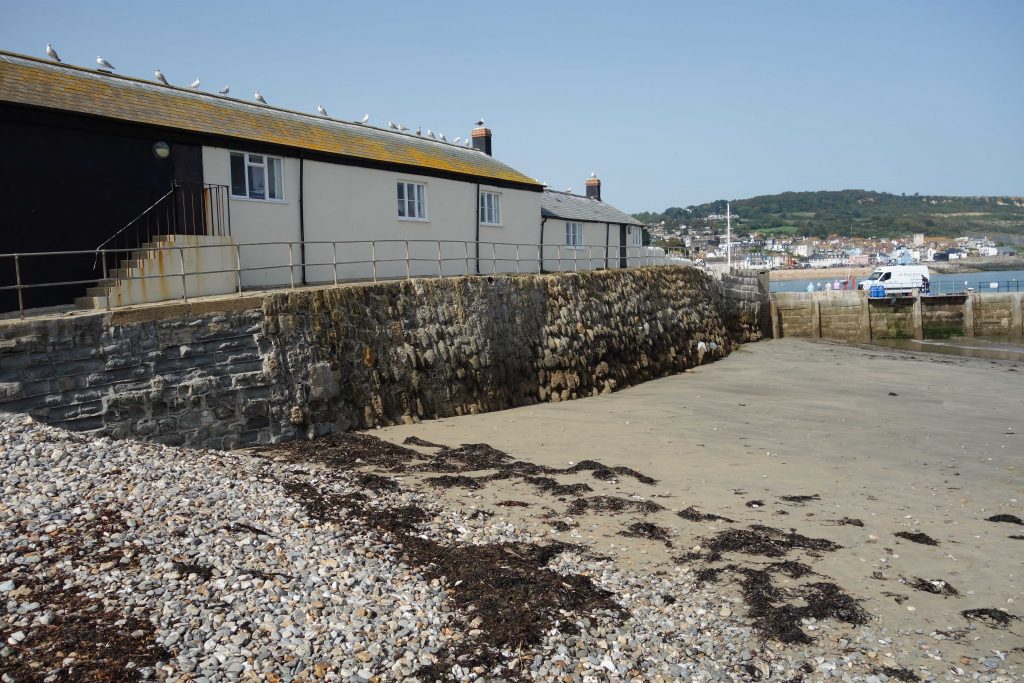
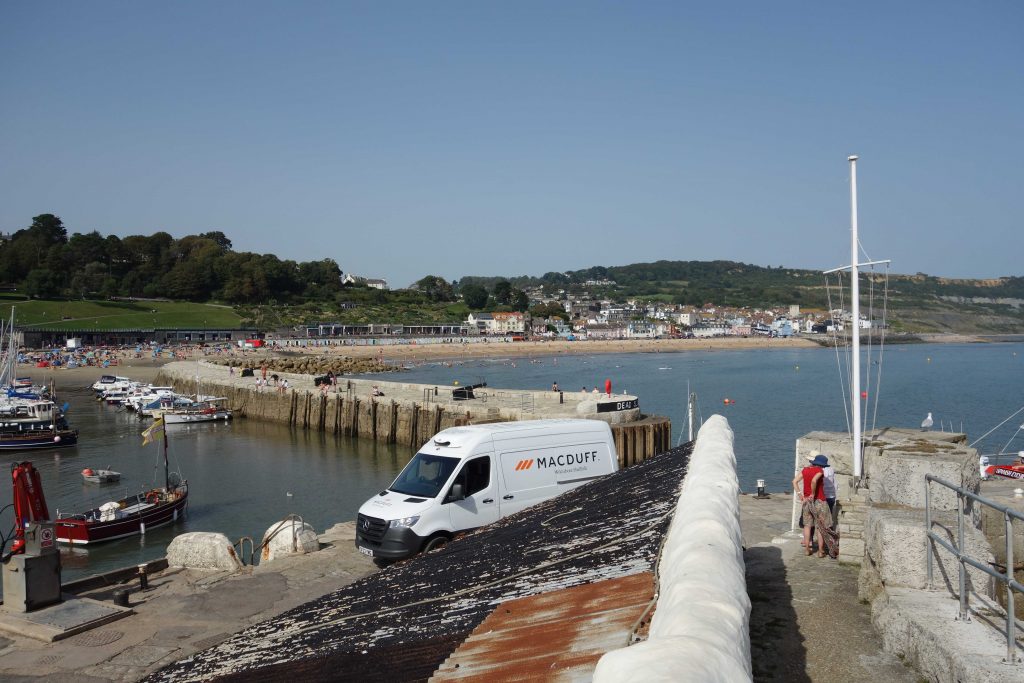
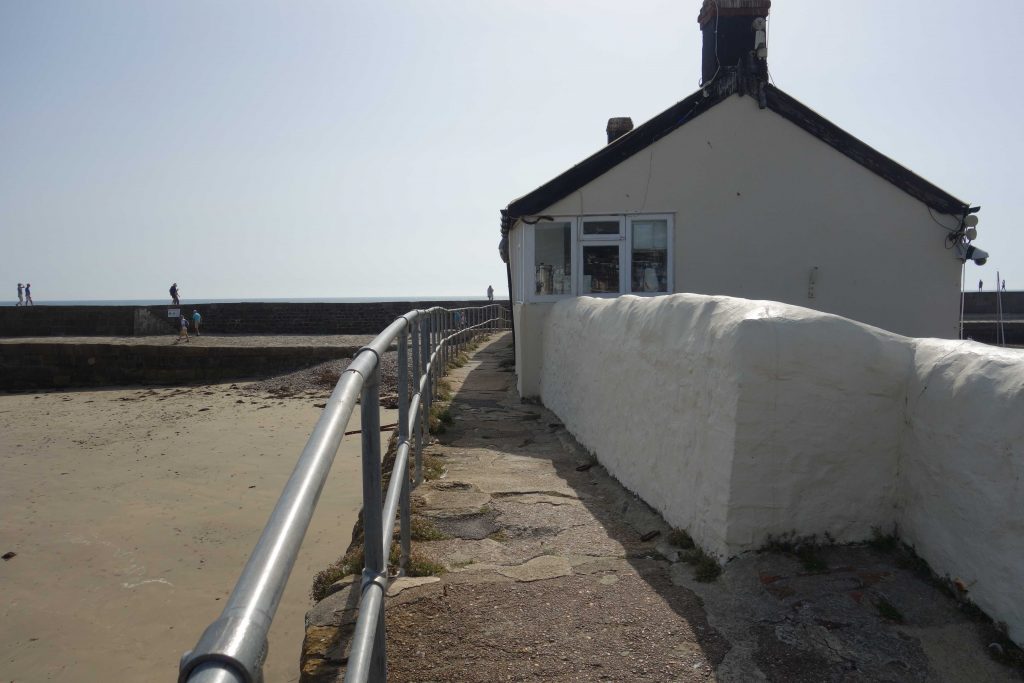
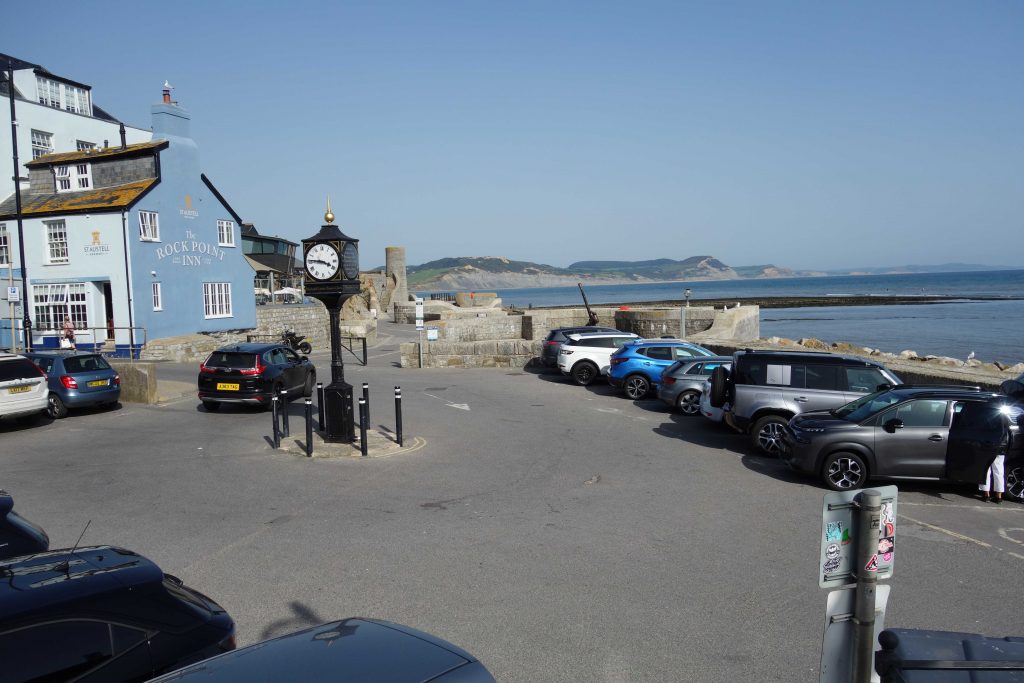
The scout would not pretend that the station was convenient to the front, but just how much effort was needed to get up the hill? An overweight 66-year old, who smokes and drinks, got to the old station entrance easily in seven minutes. The scout thought nothing of it because he is used to this sort of exertion. The trouble is, a great number of the population has become bone idle.
He left the main road and followed a quiet lane via Harcombe Bottom, eventually joining the A35. He shot down the hill, passing two turnings to town and clocking 39.7 m.p.h. He stopped briefly on the railway bridge and continued nearly to Kilmington before following The Trafalgar Way to the station.
Here, the Devonian Station Master, Alex, who the scout had chatted to earlier, advised that the 1703 had been cancelled at Gillingham due to a problem with the train. Kindly, he asked if the scout wanted the toilet; he would have unlocked it if needed. The scout rode to Millwey Rise Trading Estate to see the new Axminster Tools shop and to see what vehicles were in the yard at Tukxi. Luckily, the chap who was about to lock the gate to the row of units, saw the scout and agreed that he snap the padlock on his way out.
When the scout returned in good time for the 1804, Alex was still busy around the station, working on because of the cancellation. In the morning, he had been on the Upside assisting a disabled passenger onto a Down train, while the scout got off the Up train on the Downside (the reverse of a fortnight before). Before leaving, the scout had seen him helping a couple with the ticket machine. Then, later, he was cleaning where a drunk couple’s dog had vomited. He filled a young lady cyclist’s water bottle. He told the scout of the complicated “split ticketing” he did to give passengers a saving. Several were friendly towards him. If the booking office were shut, how much longer would this fine railway representative remain?
The scout had clocked a mere 28 miles when he returned to the utilicon.

